The best Samsung TV 2025 for all budgets, tested by our reviewers
The best Samsung TVs, from OLED to QLED and mini-LED
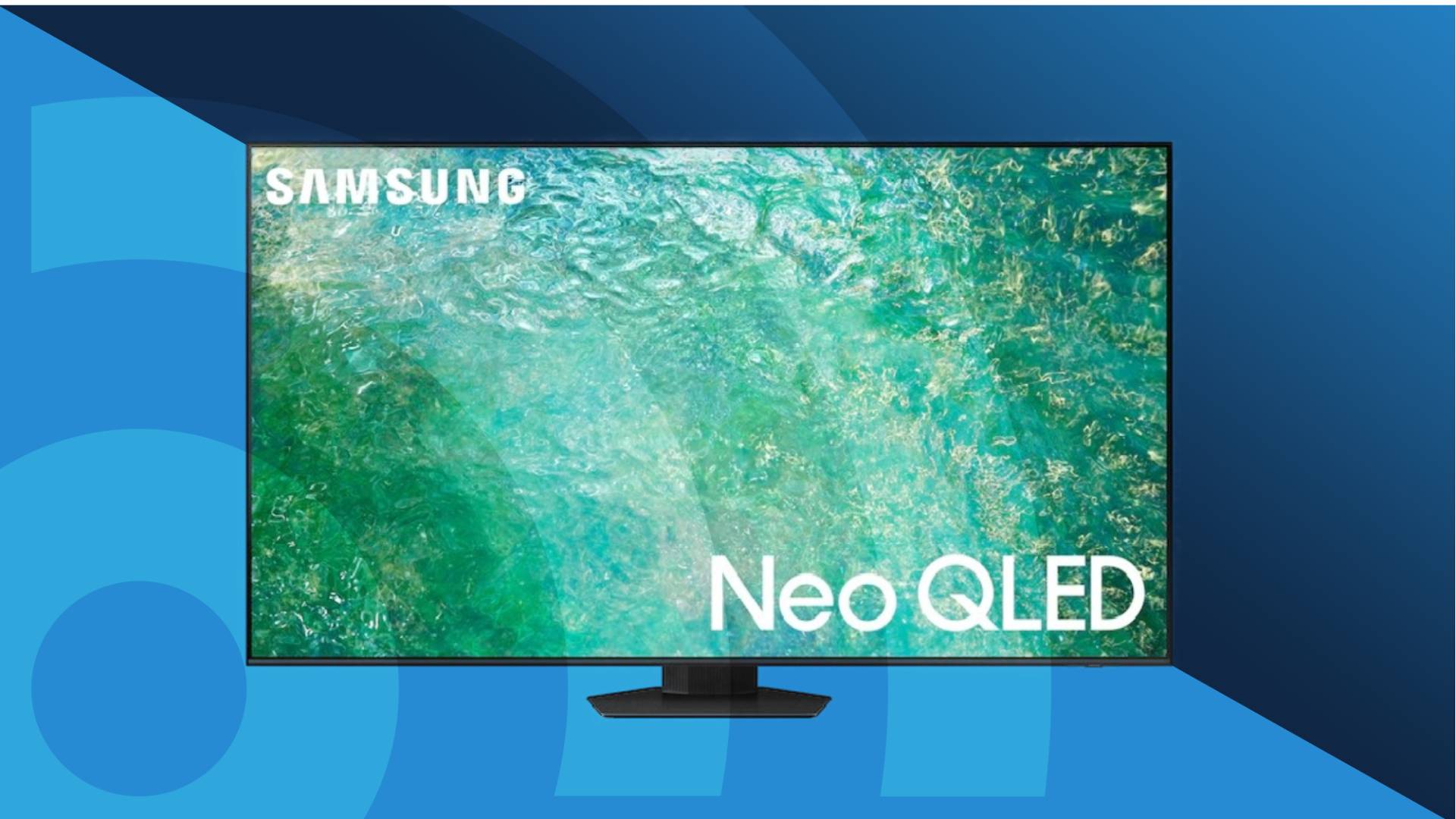
The best Samsung TVs are at the top of the TV pile in terms of build, picture quality, and features. But it’s worth bearing in mind the best Samsung TV for you isn’t always the most expensive model in the line-up as there’s much more to choose from.
Samsung makes a lot of the sets featured in our best TVs guide. It's also a versatile brand, creating some of the best OLED TVs, such as the brilliant Samsung S90C (our 2023 TV of the Year) and the Samsung S95D (our 2024 TV of the year), QLEDs such as the Samsung Q80D and mini-LEDs (Neo QLED) such as the Samsung QN90D, giving people a lot of different options.
We know how Samsung measures up to not only the competition, but also previous generations of Samsung TVs having reviewed hundreds of TVs in our time They also appear in our best 55-inch TVs and best 65-inch TVs guides, some of the most popular sizes around,
Whether you're a Samsung fan or newbie who wants to know what Samsung TV is best for sport, gaming and more, check out our list below.
The quick list
If you want to quickly find the perfect Samsung TV for you, try this list – you can also get a more in-depth write-up of any particular model by clicking the TV link!
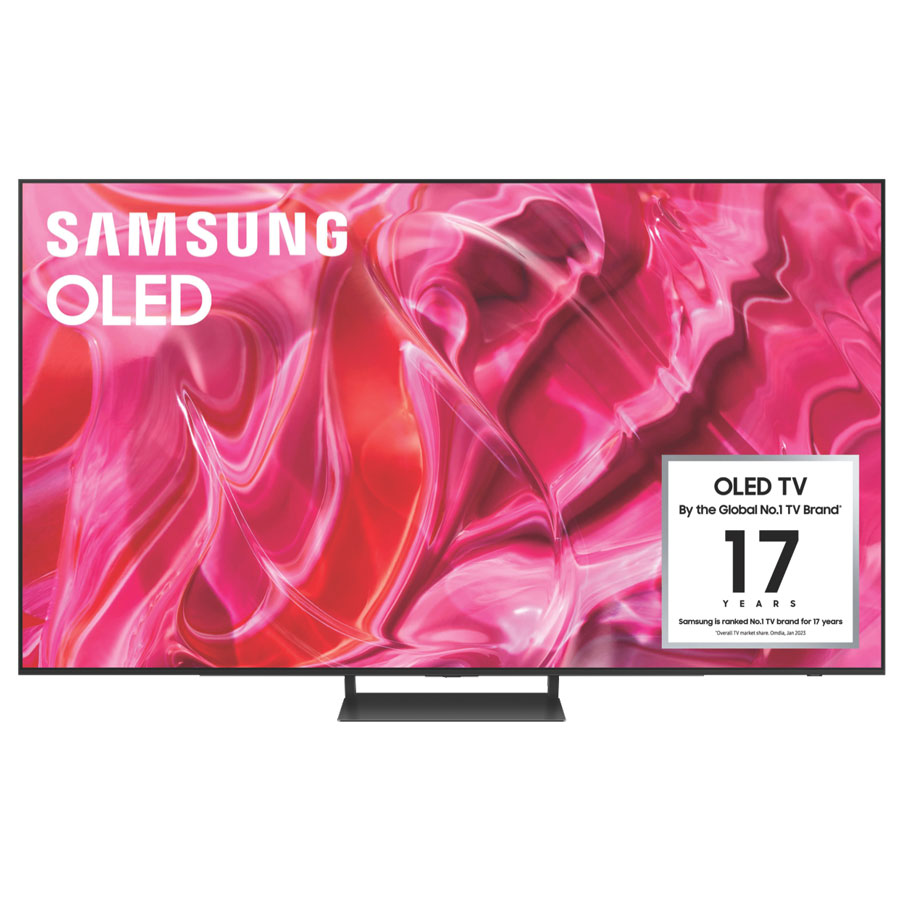
Best overall
Our top TV that we think will suit most people thanks to its stunningly bright, contrast-rich pictures and excellent gaming support. Truly great value for a QD-OLED.
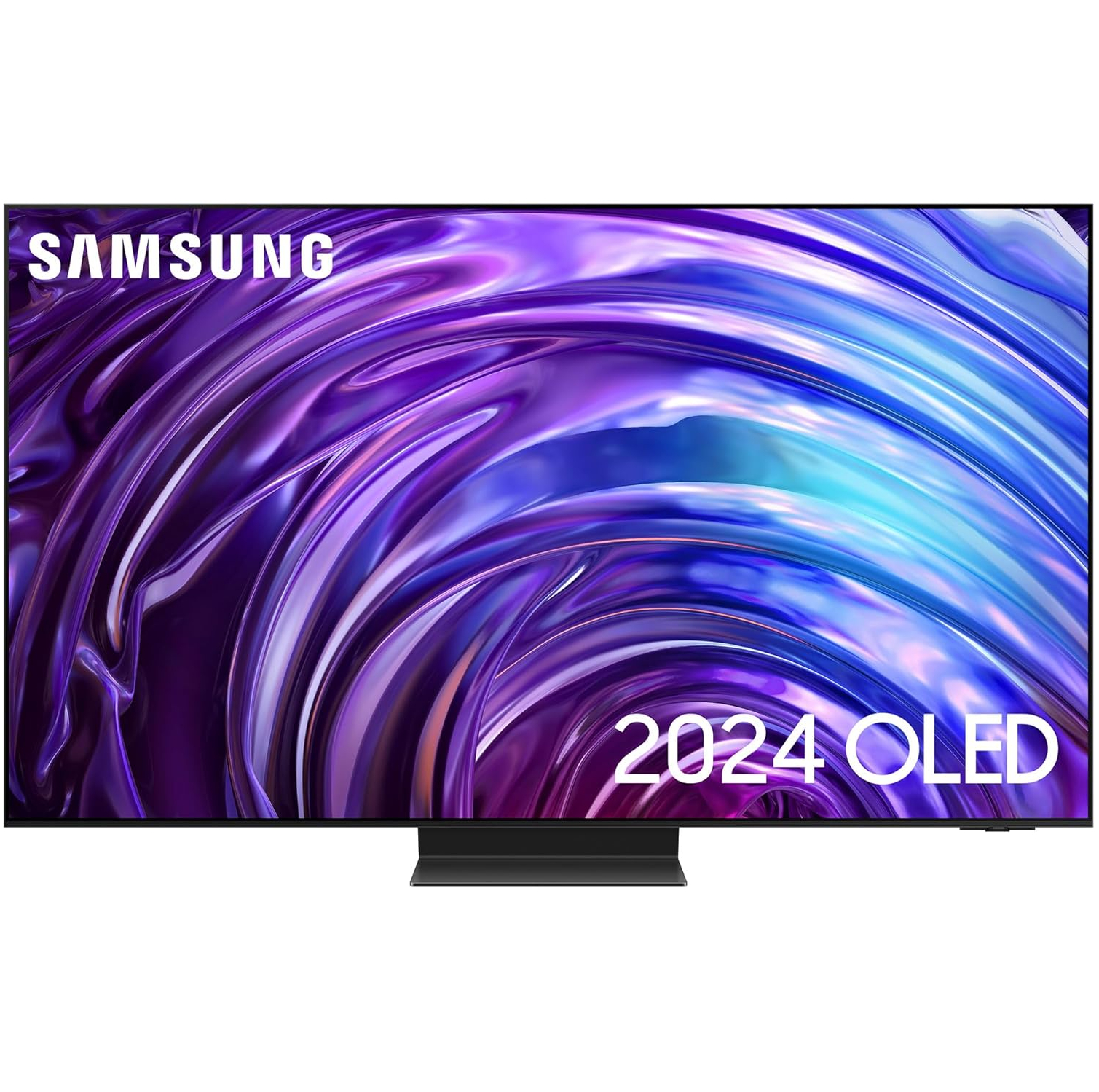
Best premium
Impeccable picture quality, excellent gaming prowess and a stylish design make the Samsung S95D the very definition of a premium TV experience.
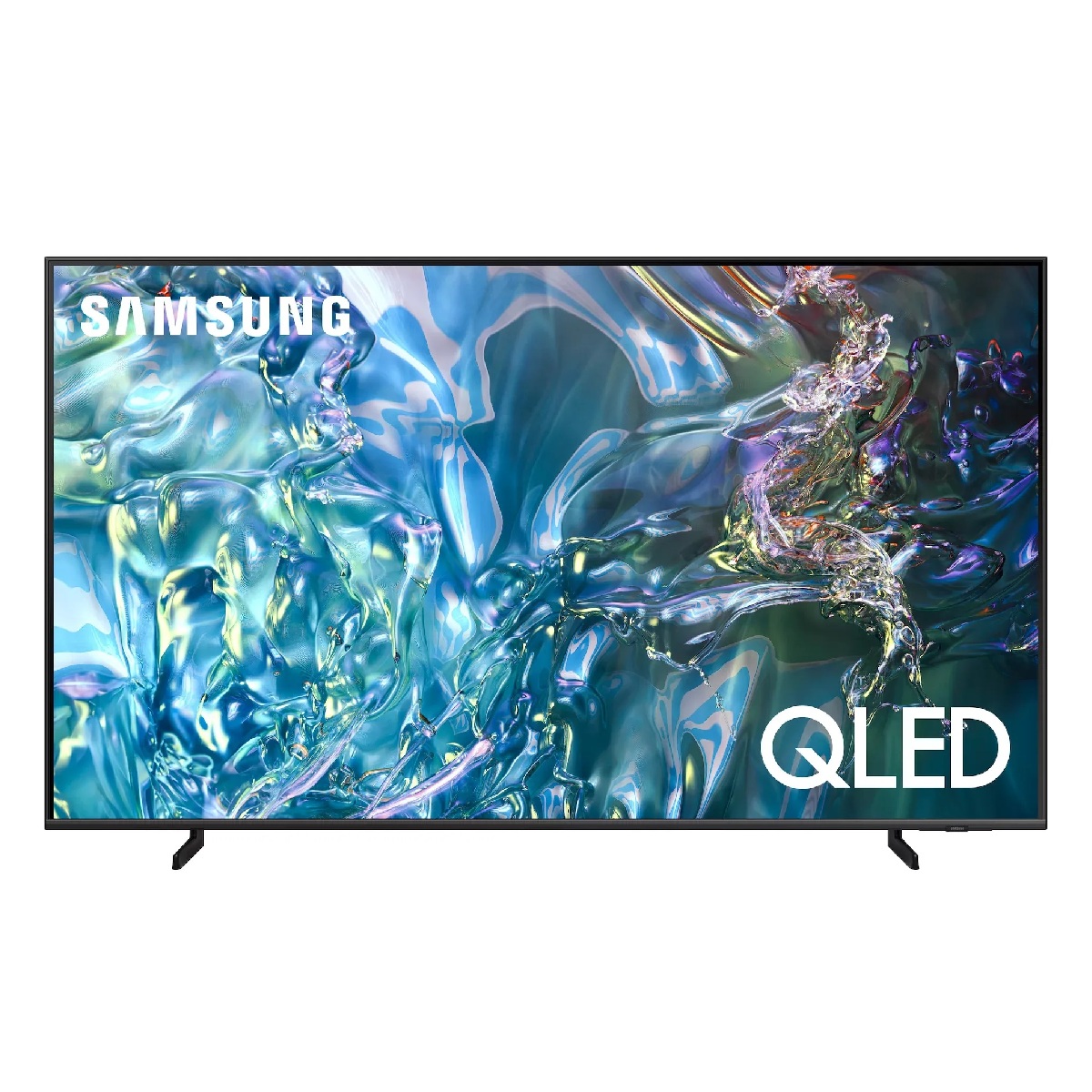
Best budget
With decent QLED picture quality and smart features plus a sleek design, the Samsung Q60D outperforms its affordable price.
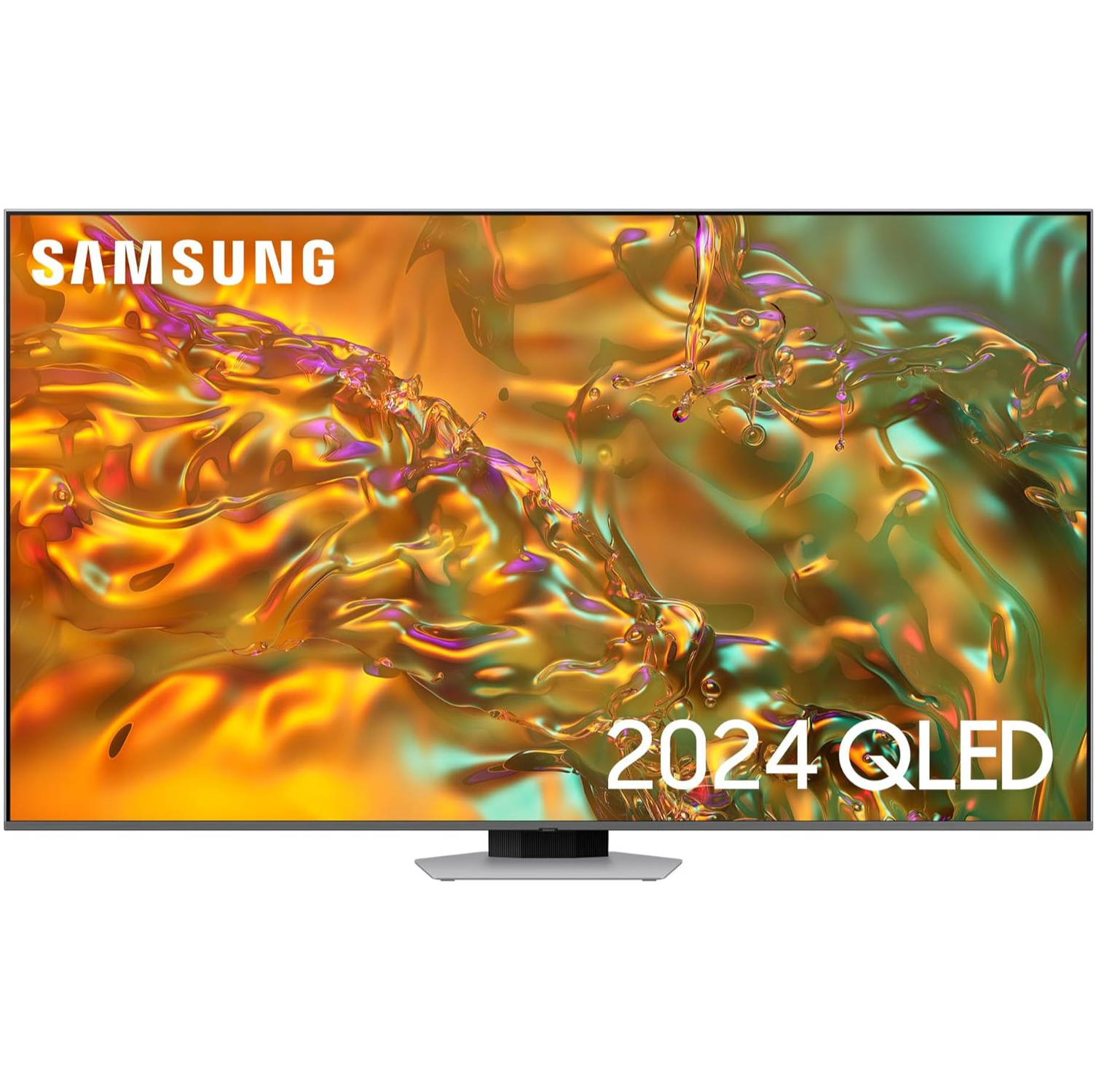
Best mid-range
A well-priced Samsung TV that delivers HDR pictures with surprisingly great lighting control and rich detail. Buy it if you want brightness and color but can’t afford a mini-LED TV.
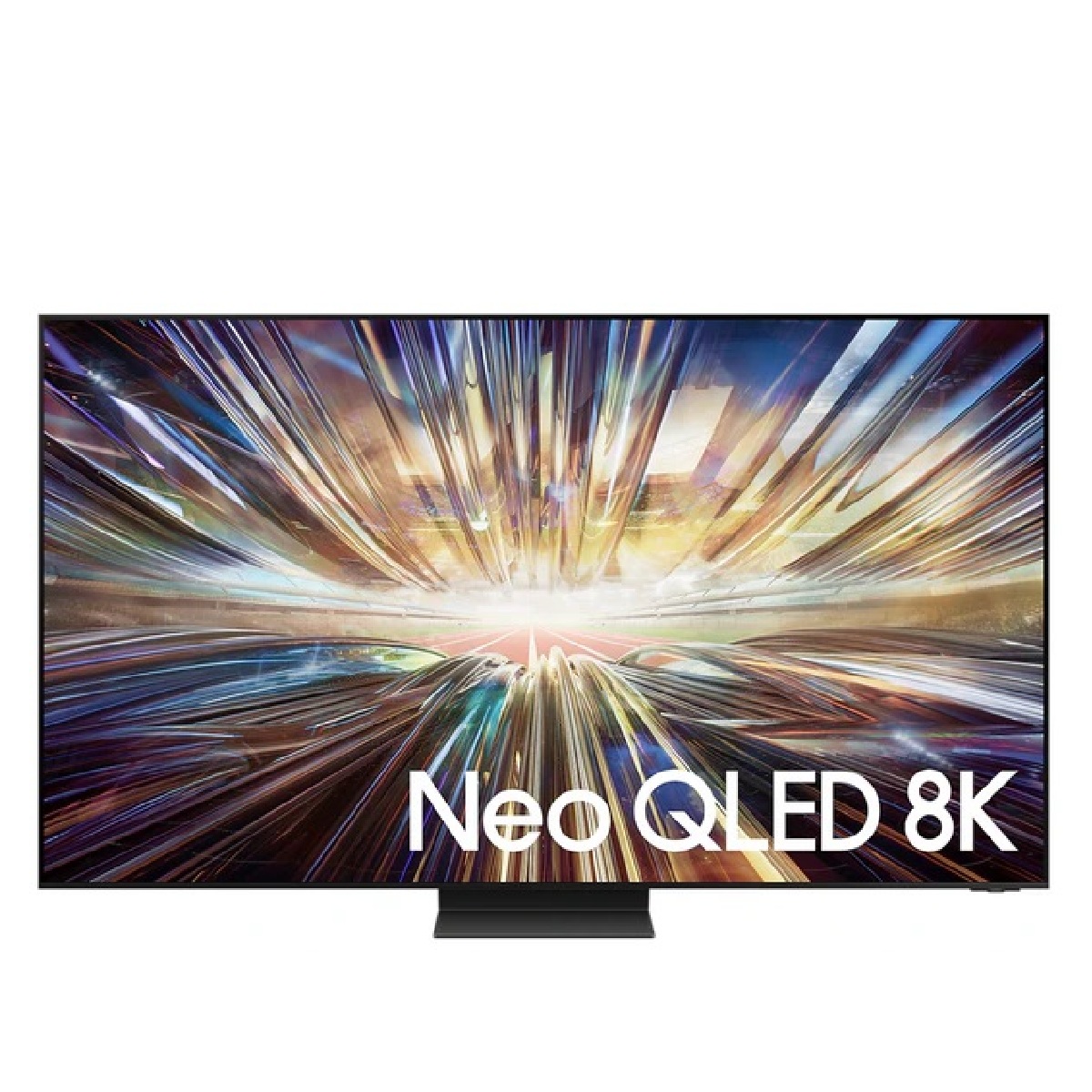
Best 8K TV
The QN900D impresses with gorgeous textures, effective 8K upscaling, and smooth motion. It's Samsung's best-performing mini-LED TV, and is worth its high price.
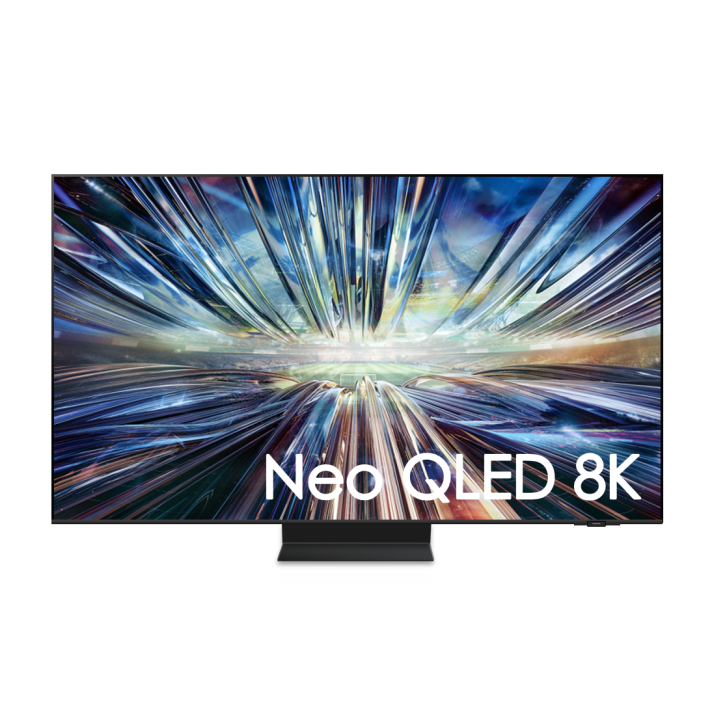
Best cheaper 8K TV
It may not hit the heights of the QN900D, but the QN800D delivers impressive details and upscaling in its own right - and it's quite a bit cheaper.
Load the next product...
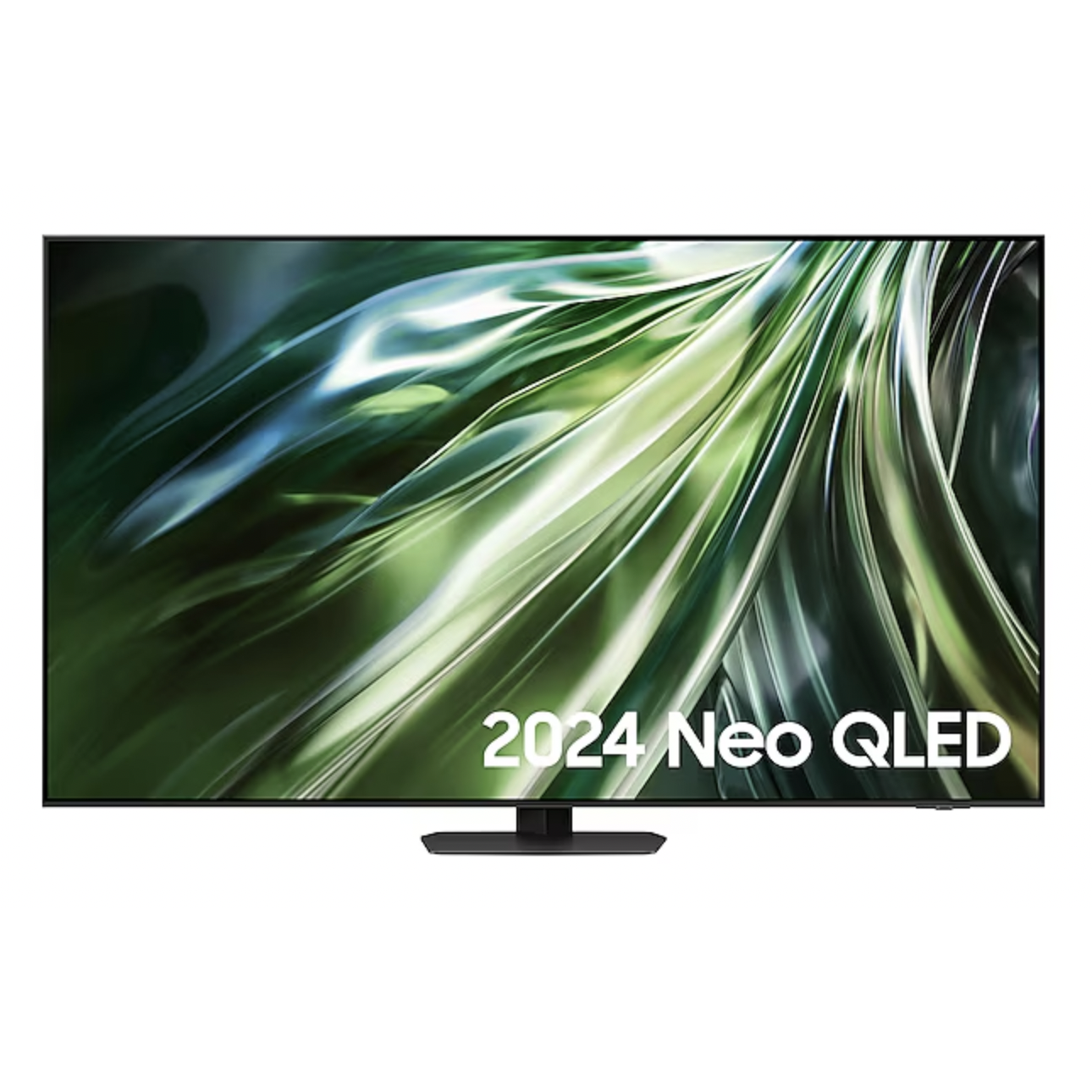
Best 4K mini-LED
This 4K mini-LED boasts high brightness and an anti-glare screen, making it ideal for daytime TV and sports viewing. It's a solid choice if you're looking for a gaming TV, too.
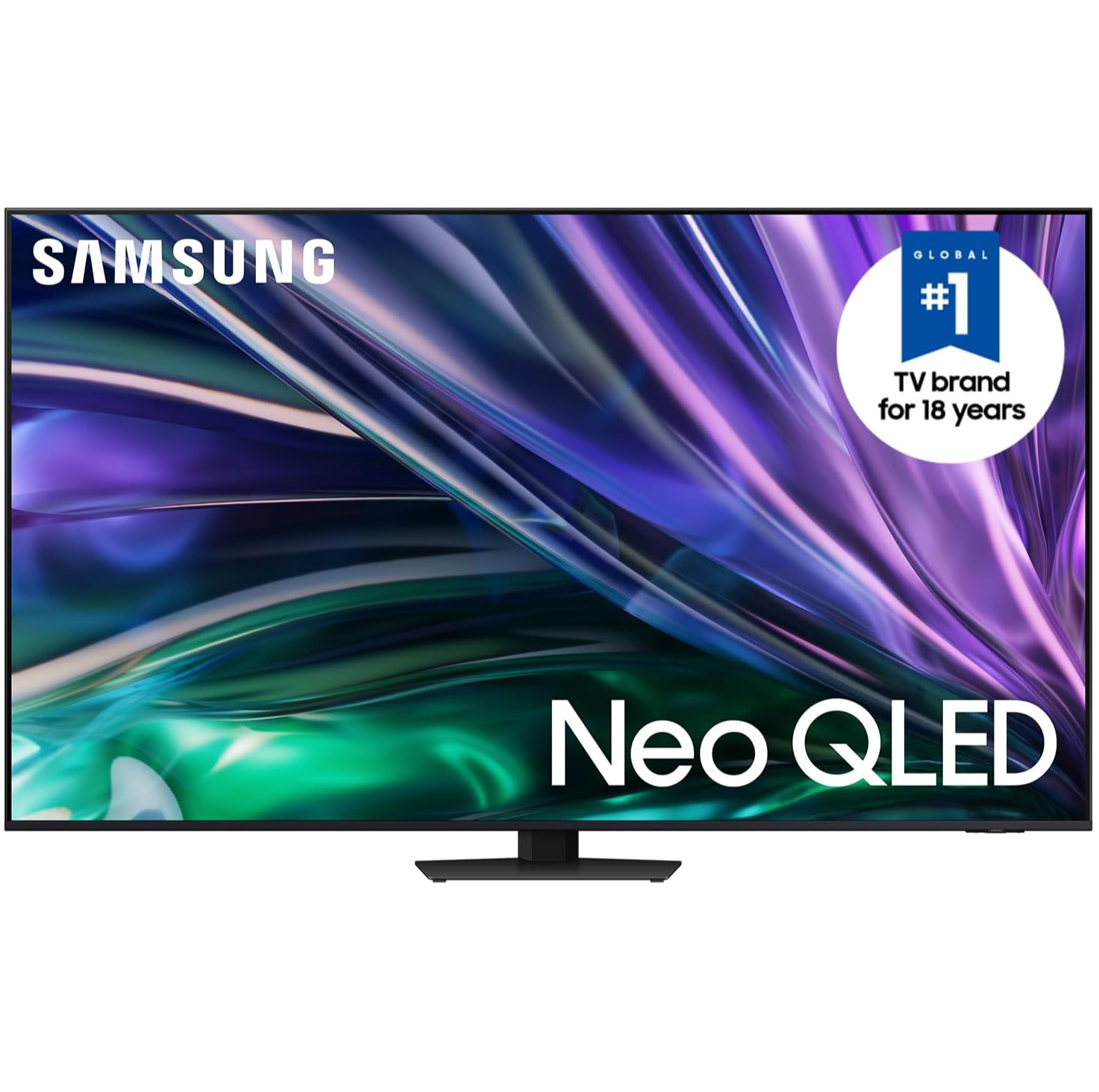
Best affordable mini-LED
This has lower brightness than more premium mini-LEDs, but its performance is still very good, and it's packed with top gaming features and advanced processing.

I'm TechRadar's specialist TV writer and cover everything from 32-inch sets to 100-inch, cinema sized TVs and everything in between. Before joining the team, I worked in AV retail where I worked with TVs, hi-fi audio, home installations and more.
The best Samsung TVs of 2025
Why you can trust TechRadar
The best Samsung TV overall
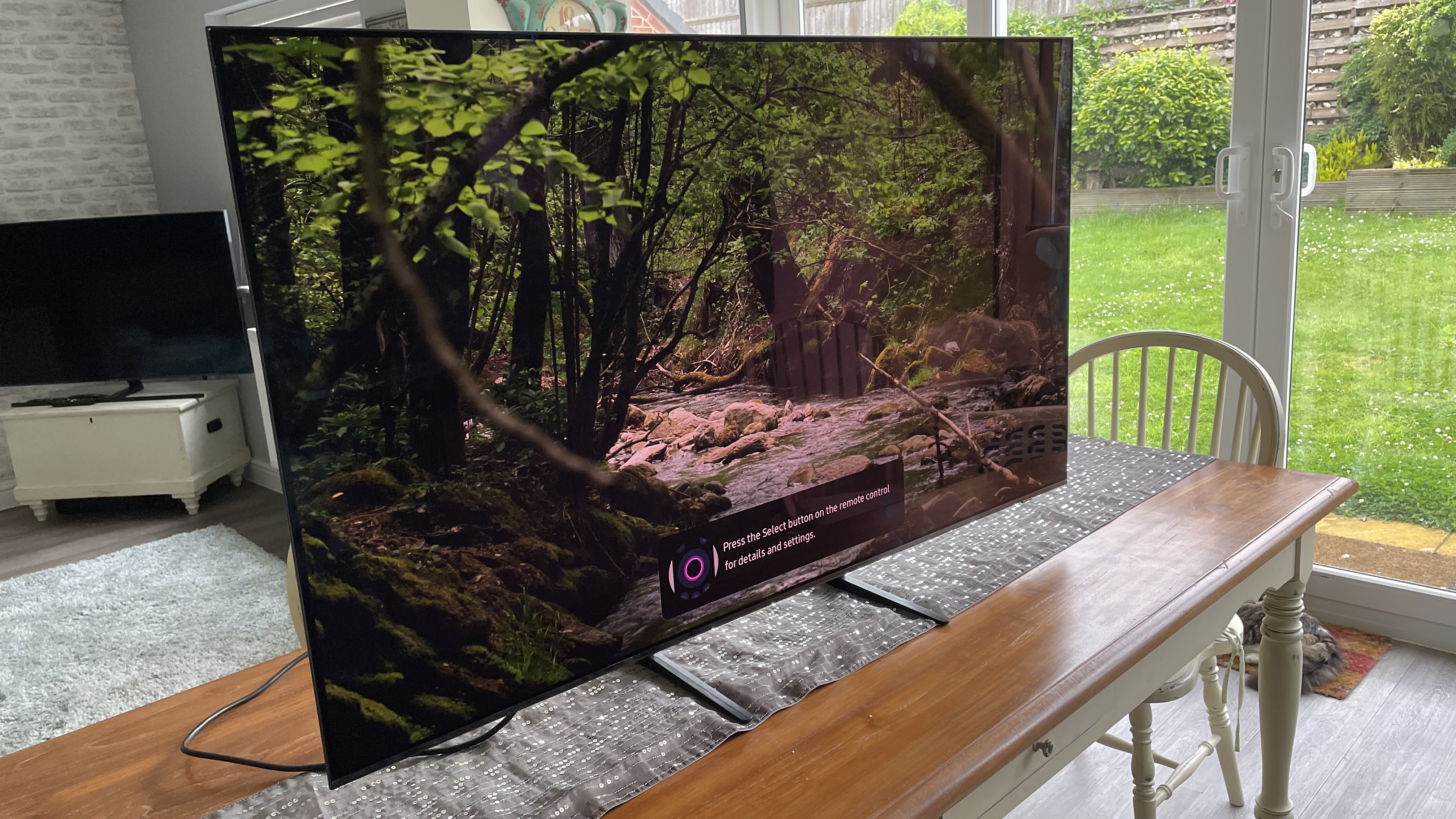
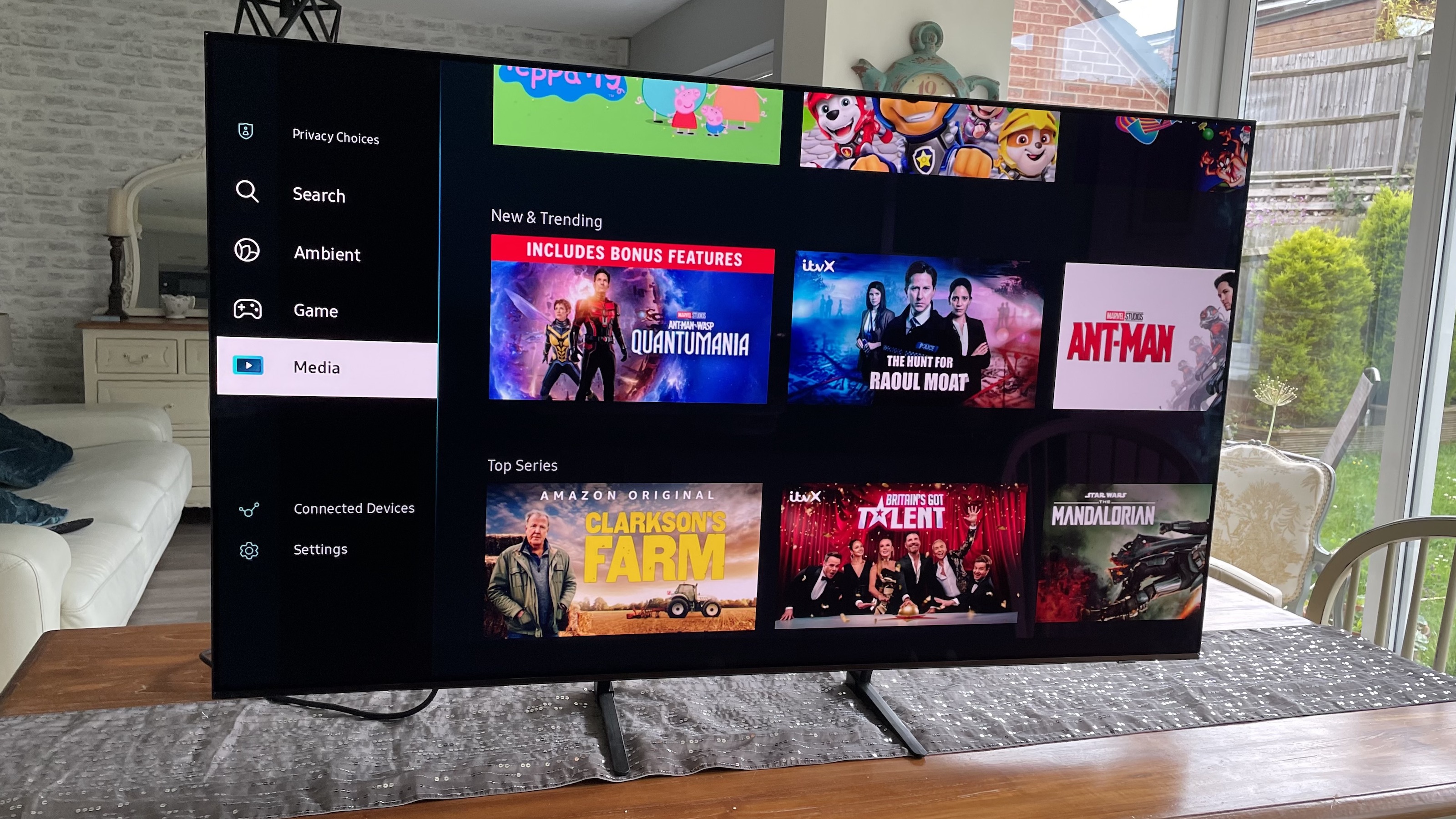
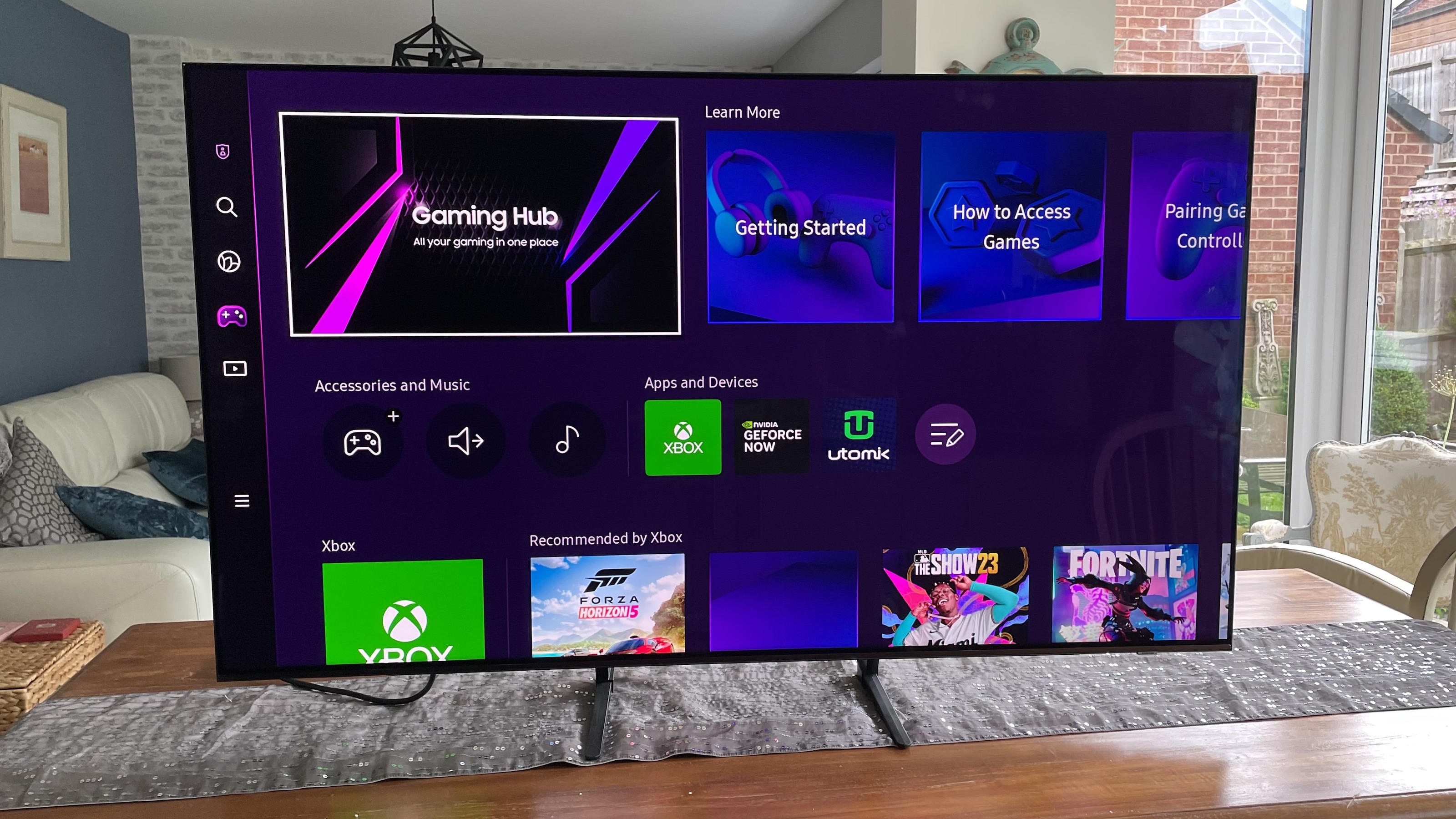
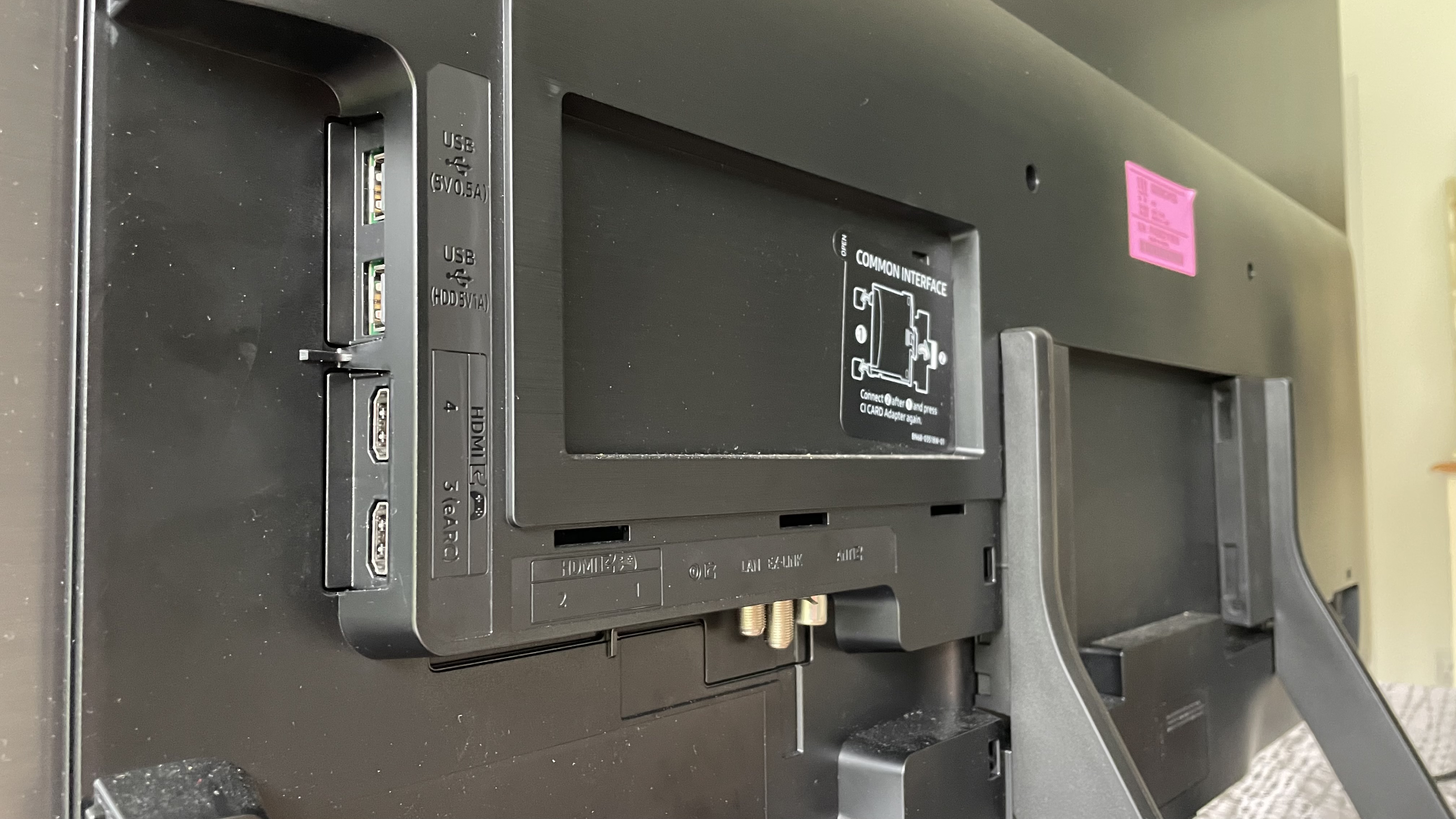
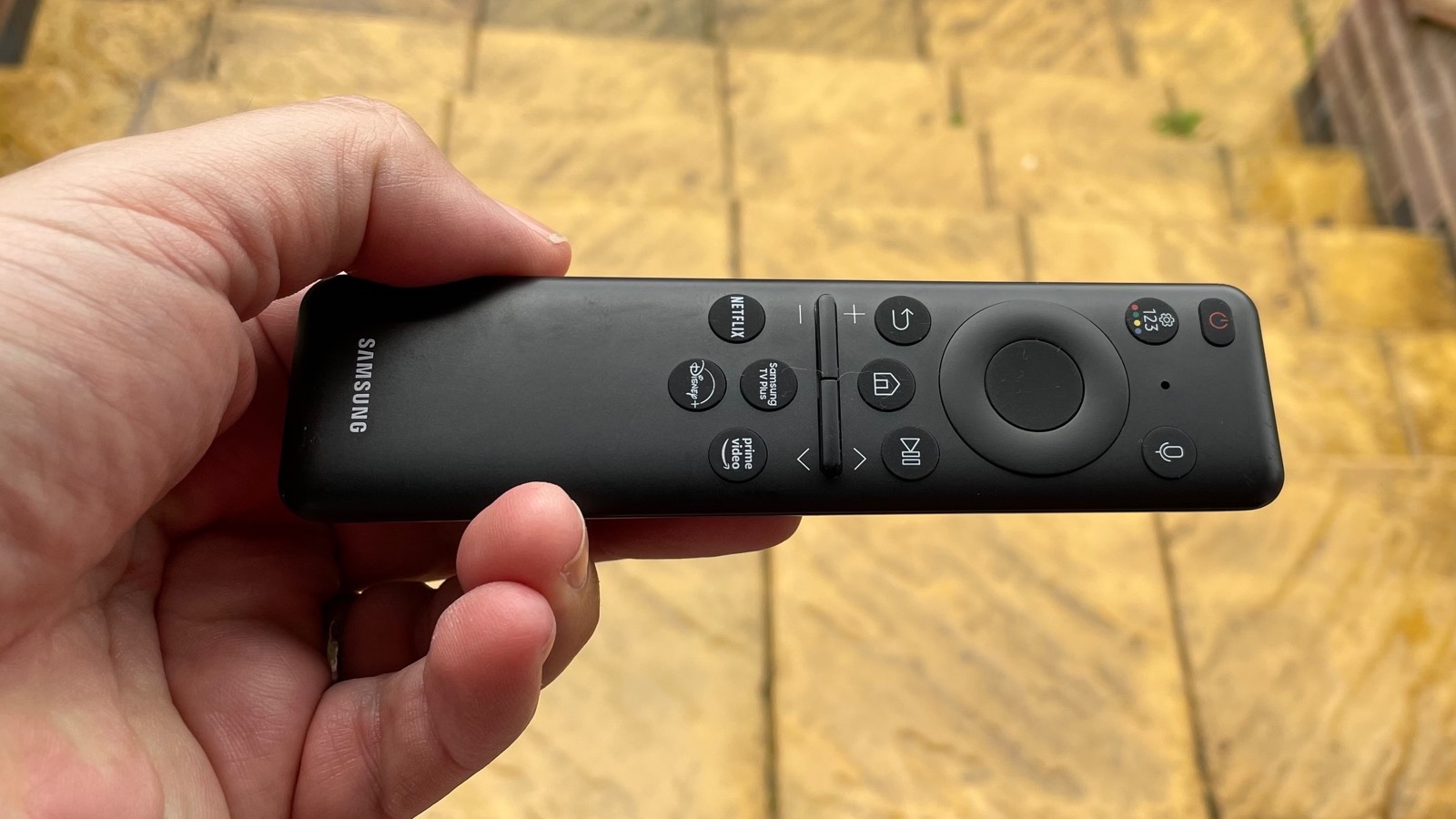
Specifications
Reasons to buy
Reasons to avoid
✅ You want an excellent all-around TV: The Samsung S90C's incredible picture quality, solid built-in sound and superb gaming features make it a real jack-of-all-trades.
✅ You want QD-OLED for cheaper: The S90C is the cheapest way to get a TV with Samsung's innovative QD-OLED panel tech, with only more pricey models such as the Samsung S95D as a step-up option.
❌ You want the brightest Samsung TV: The Samsung S95D and Samsung QN90D on this list have higher brightness than the S90C.
❌You want Dolby Vision support: As with all Samsung TVs, the S90C does not support Dolby Vision HDR for movies or gaming.
The Samsung S90C is our top pick to suit most people. It comes with a great range of connectivity options and gaming support, with full 4K 120Hz and variable refresh rate gaming graphics across all four of its HDMIs. It also has Samsung’s Neural Quantum 4K processor, which uses 20 neural networks to introduce multiple 'AI'-based refinements to the way the TV treats incoming sources – including better upscaling of HD and SD content to the screen’s native 4K resolution.
Picture quality is stunningly bright here, presenting you with contrast-rich pictures. The S90C might not give you the full QD-OLED experience you'd get with Samsung’s S95D further down in this list, but it still manages unlock a higher level of brightness and color depth than other OLED's at the same price. It's also watchable from almost any viewing position.
Design-wise, the Samsung S90C has an incredibly thin panel, especially at its edges. It's a little chunkier in the middle because that's where its external connections/processing box is. Some people who don't like cables might want an external box instead, but this design is likely one of the reasons that the S90C is excellent value.
The Samsung S90C is great value for a QD-OLED. It's cheaper than LG’s C4 model, but the boost you get in brightness and sound quality is worth the extra cost. Compared to the S95D it's not as bright, but there are times where the S90C arguably retains a touch more consistency and balance than its more expensive siblings.
Read our full Samsung S90C review
The best premium OLED Samsung TV
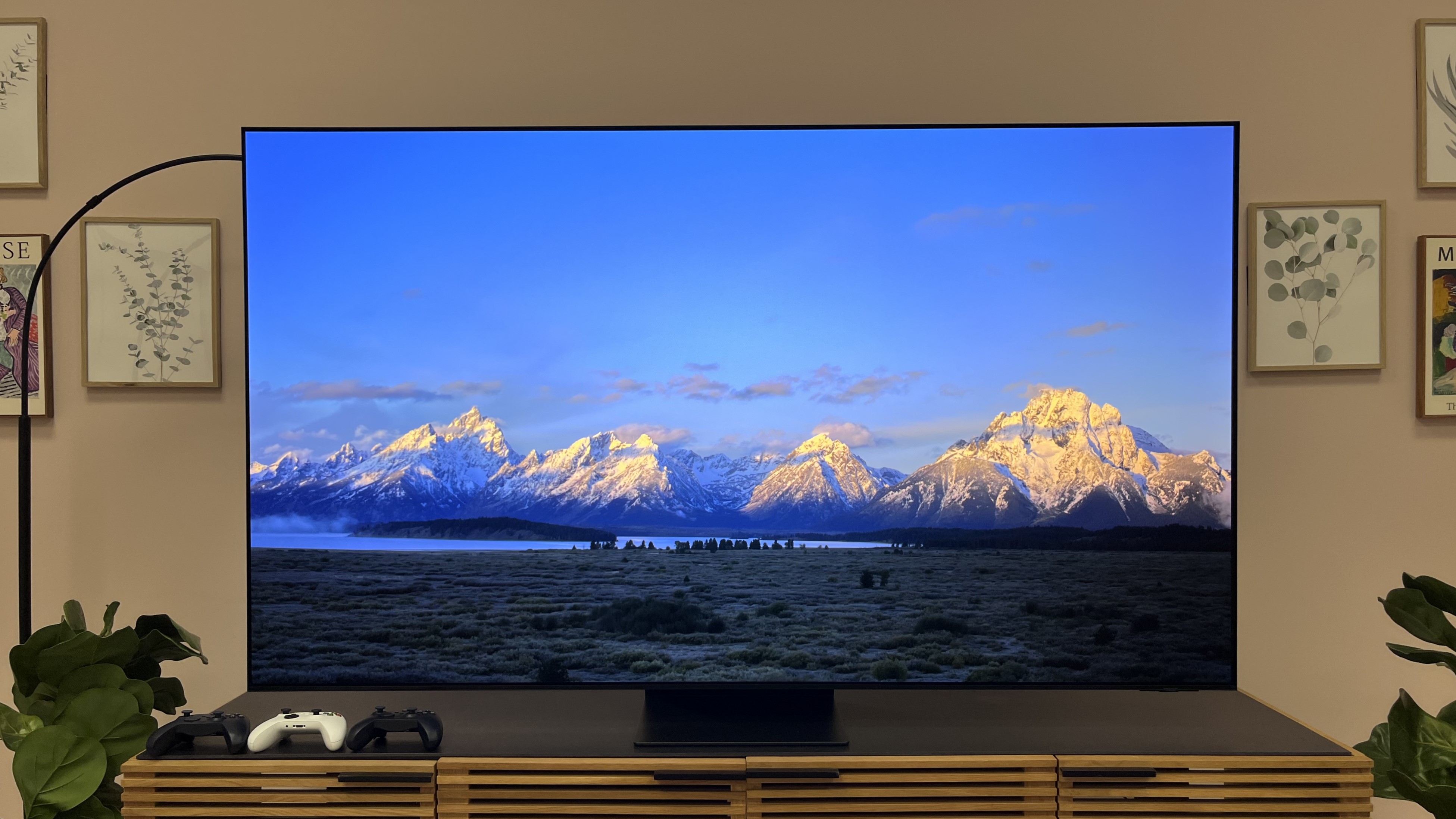
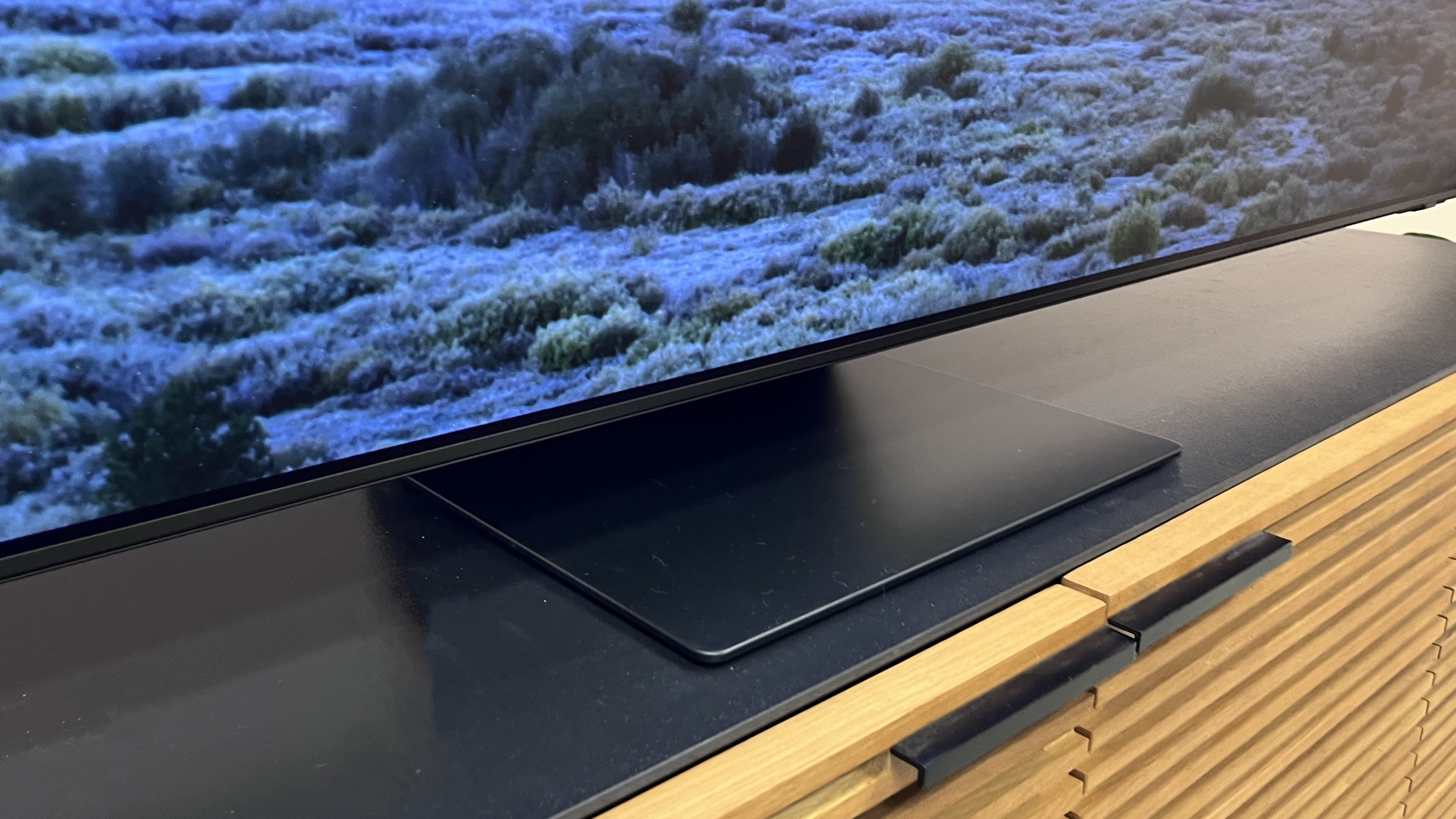
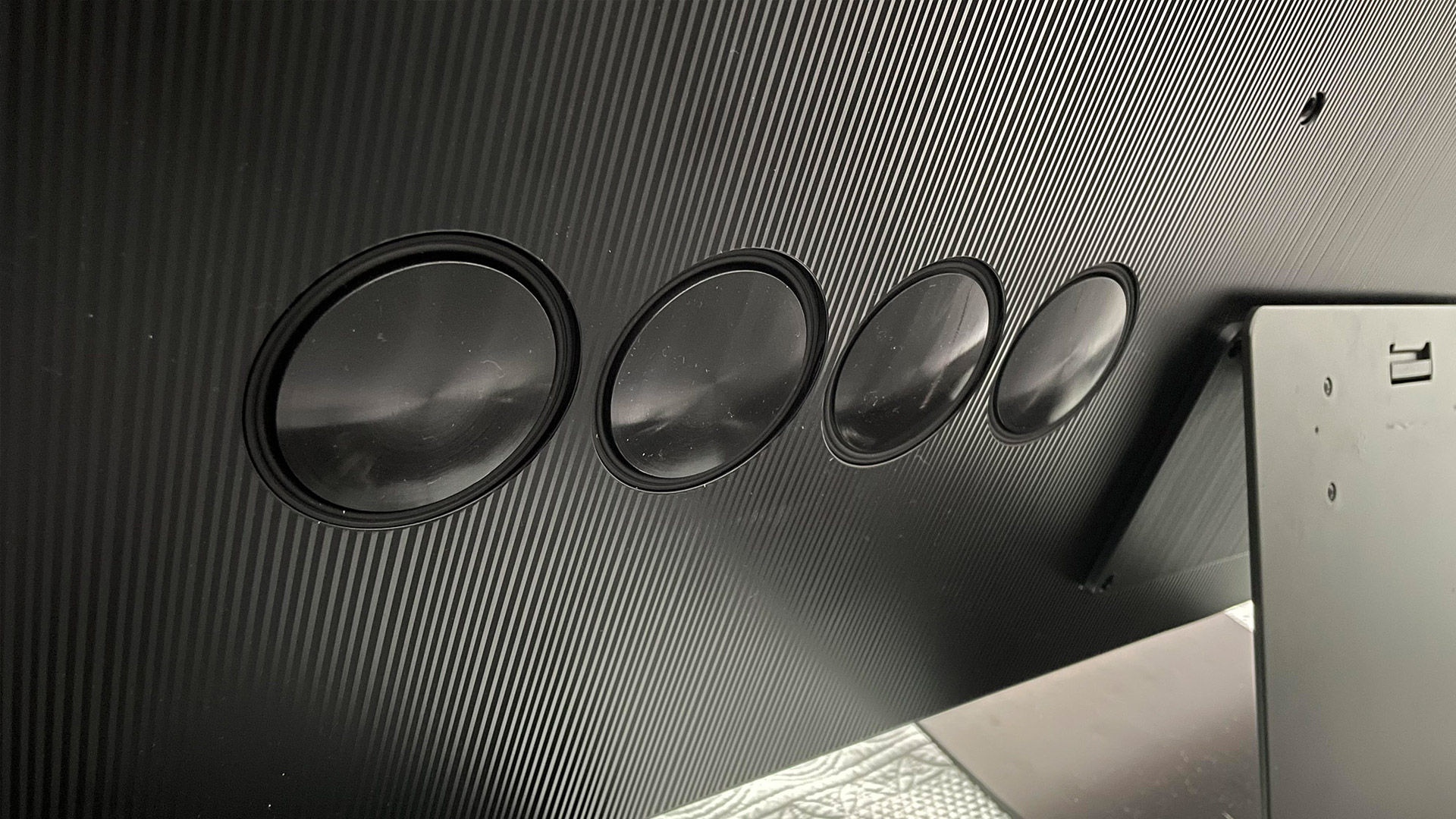
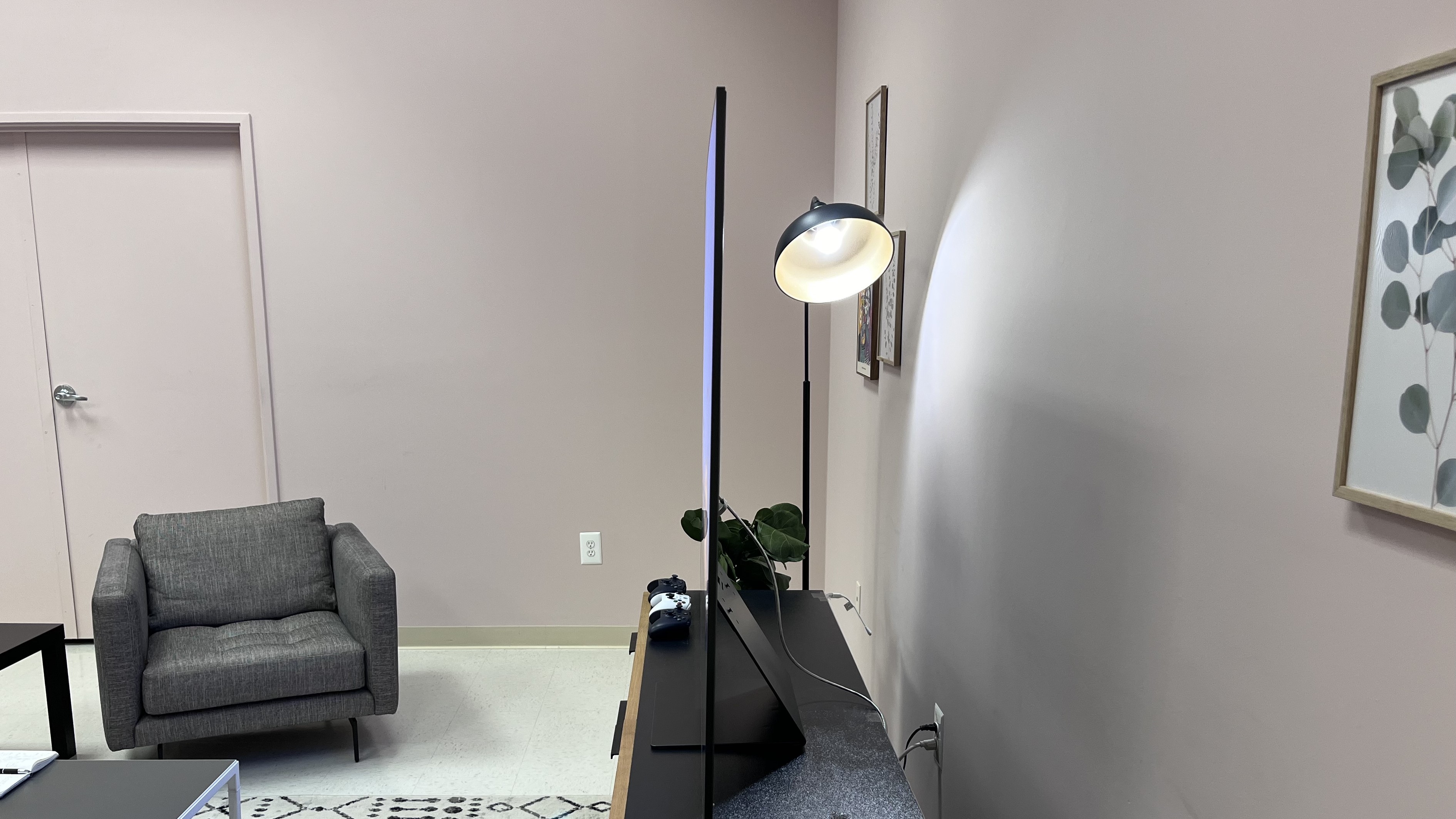
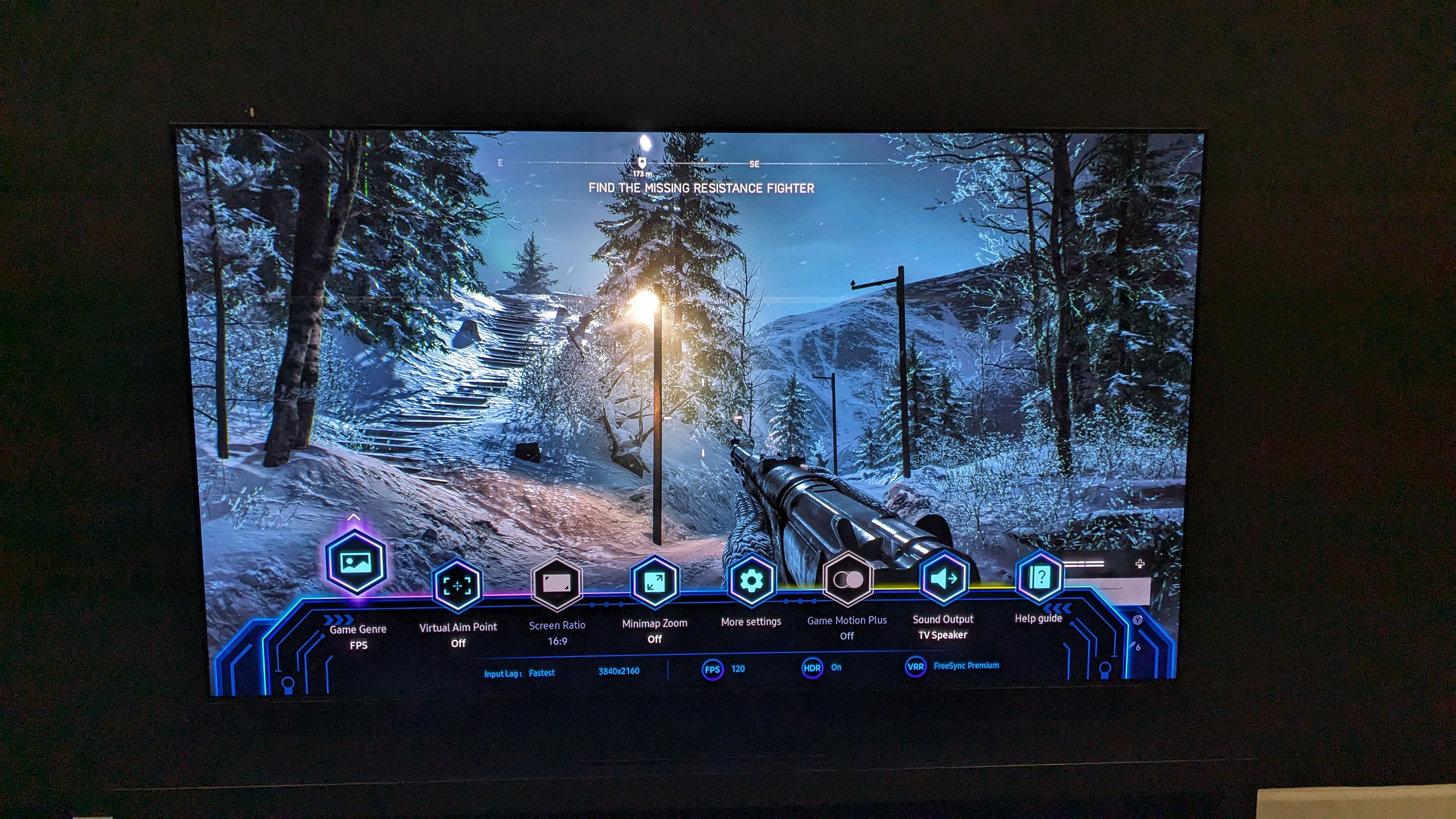
Specifications
Reasons to buy
Reasons to avoid
✅ You want to watch in a bright room: Thanks to its OLED Glare Free anti-reflection tech, the Samsung S95D beats reflections in bright rooms – a previous kryptonite for OLED screens.
✅ You want outstanding picture quality: The Samsung S95D has a bright, colorful, contrast-rich, detailed picture and is the definition of a premium OLED TV.
❌ You don't want to make picture adjustments: When we tested the S95D, we found we had to make adjustments to reduce black crush in darker scenes.
❌You're on a budget: The S95D is the priciest TV on this list other than the two 8K models, the Samsung QN900D and QN800D.
The Samsung S95D is the company's 2024 flagship OLED TV. It carries many of the same great features as its predecessor, the Samsung S95C, but adds excellent anti-reflection tech that successfully addresses one of OLED tech's biggest issues: screen reflections.
Maintaining excellent picture quality despite its matte screen (part of the anti-reflection measures), the S95D also offers incredible picture detail, with refined textures and the rich contrast, bold colors and high brightness you'd expect from a QD-OLED TV. You may need to tweak some picture settings (black crush is present in Filmmaker Mode) but once you do, the S95D delivers an outstanding picture.
The S95D also serves as an excellent gaming companion, with four HDMI 2.1 ports all supporting up to 144Hz refresh rate, VRR (with AMD FreeSync Premium Pro), ALLM and more. Plus, it comes with Samsung's useful Gaming Hub, which locates all gaming features in one place.
Design is another highlight, with a sleek, modern look and a 'floating' appearance thanks to its unique stand design. Even the built-in audio and Tizen smart TV system pitch in to make the S95D great.
A TV of this quality predictably carries a high price tag, but if you can stretch your budget, the S95D is worth the money.
Read our full Samsung S95D review
The best budget Samsung TV
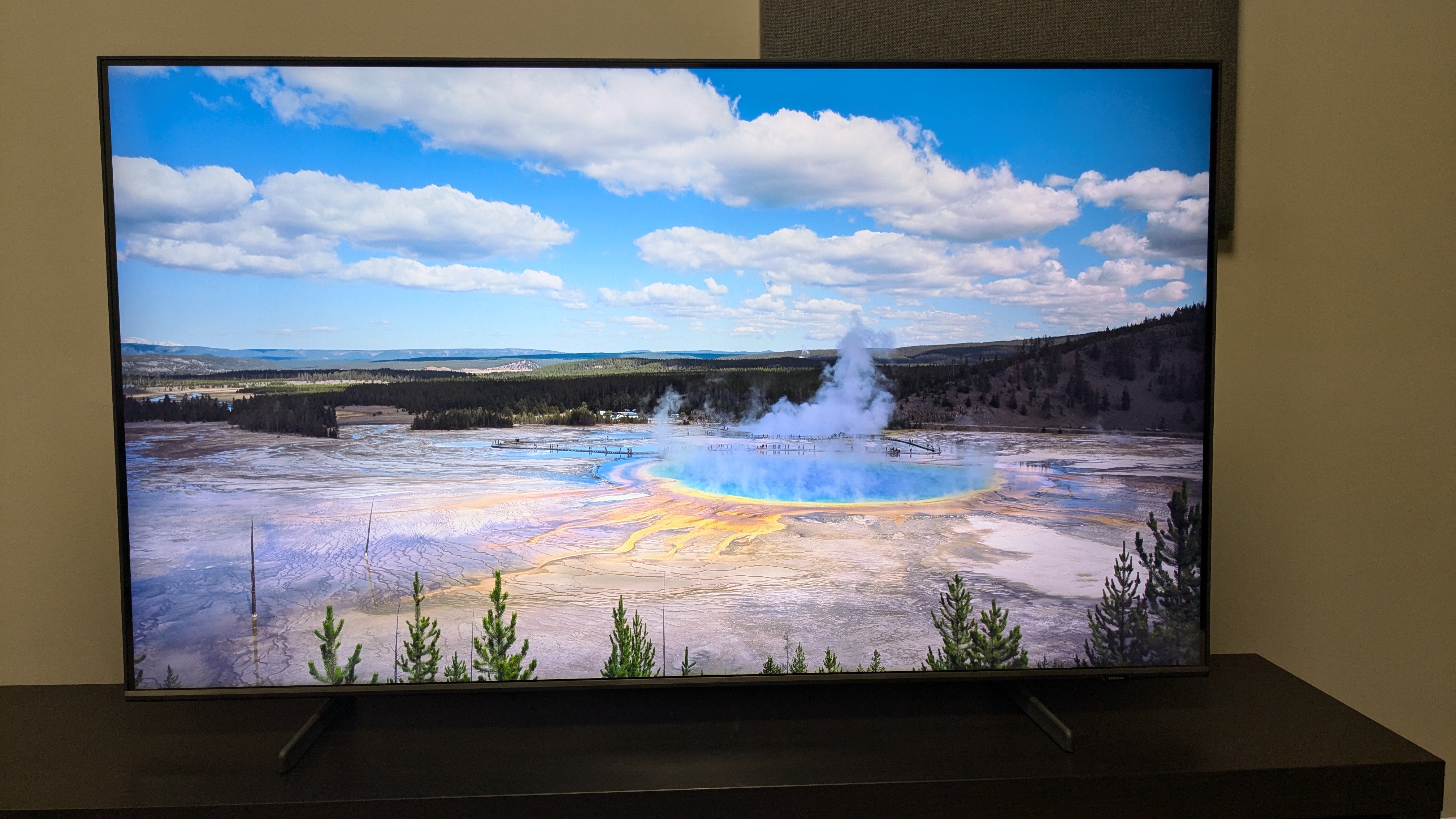
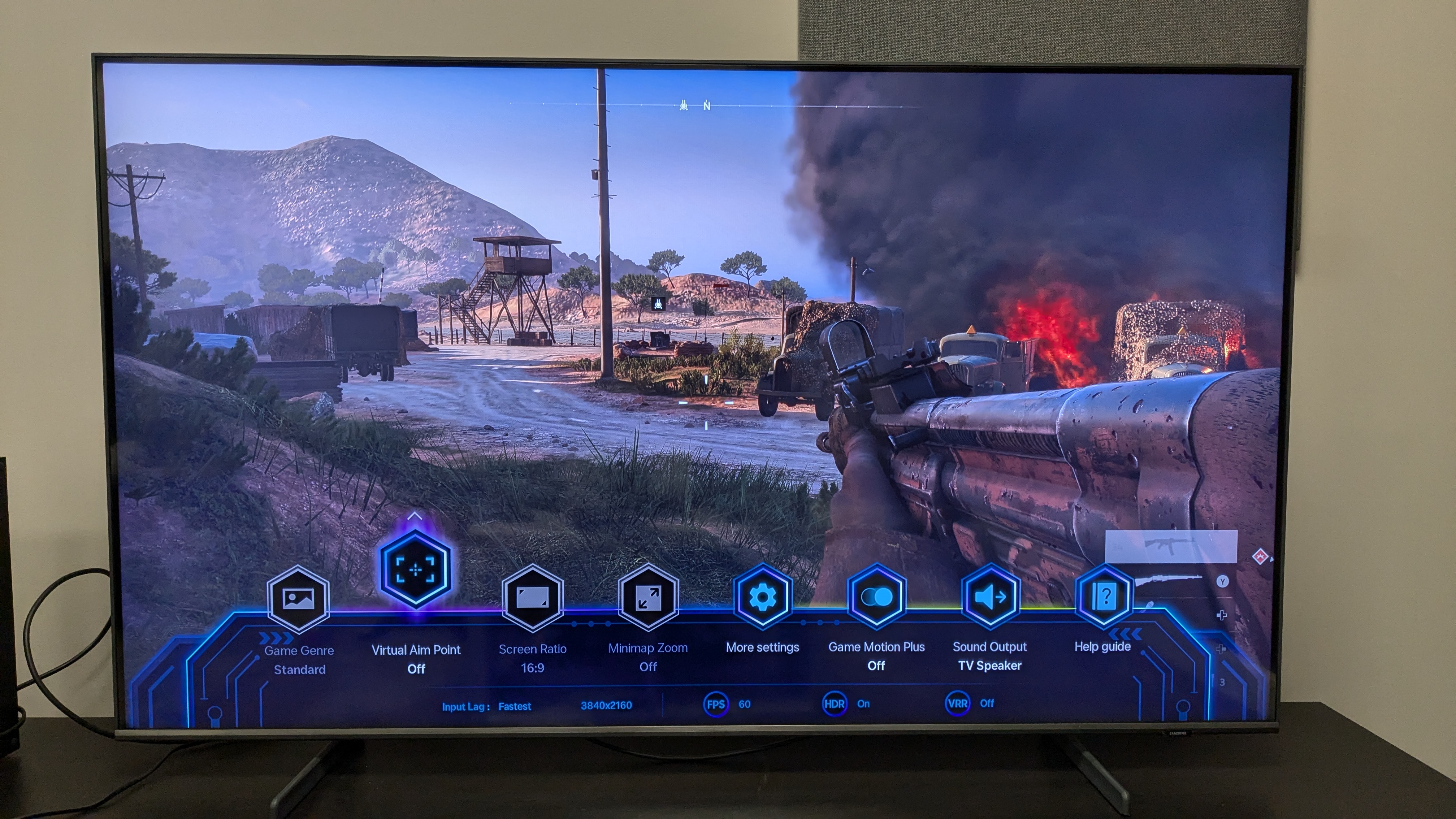
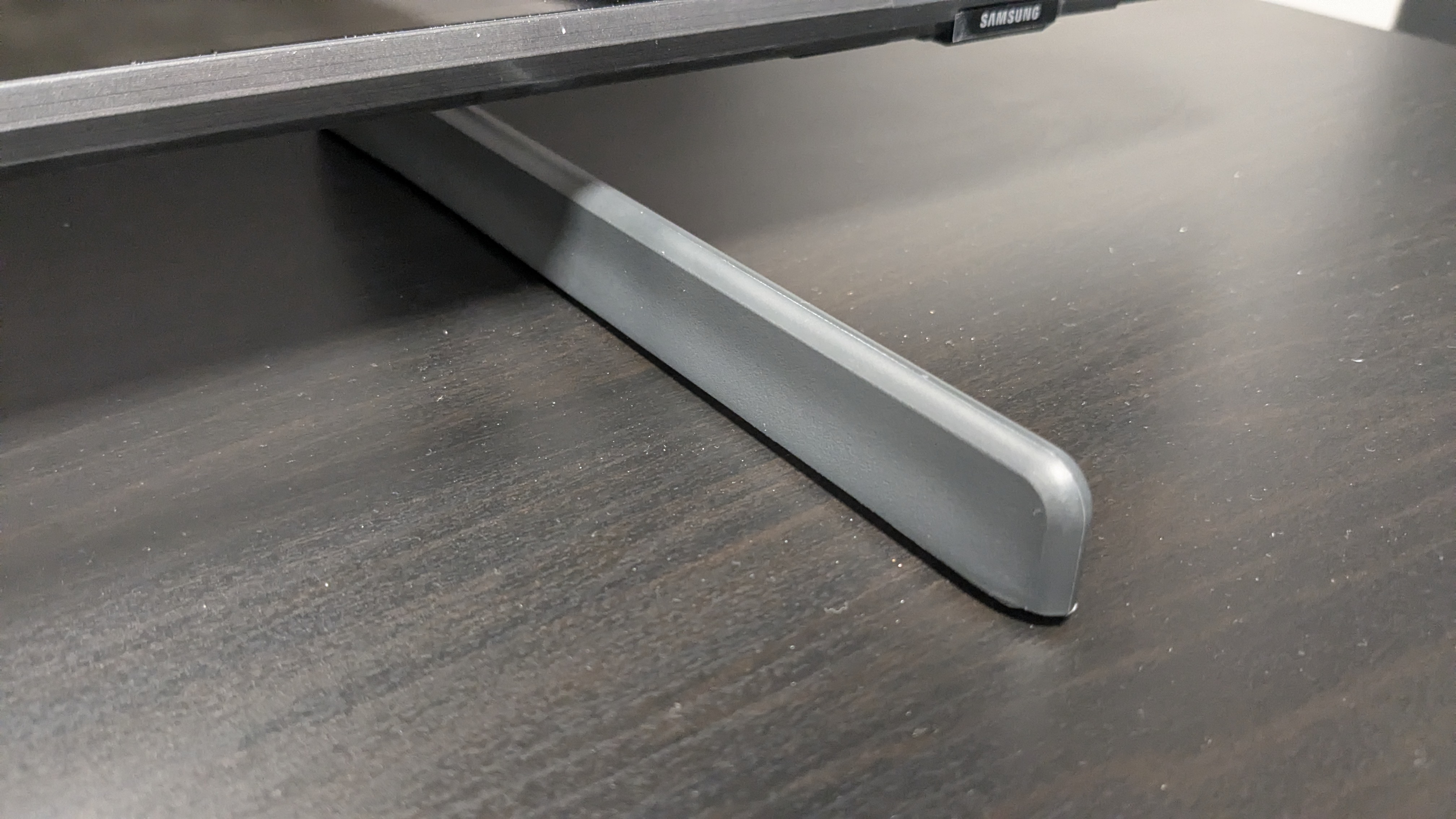
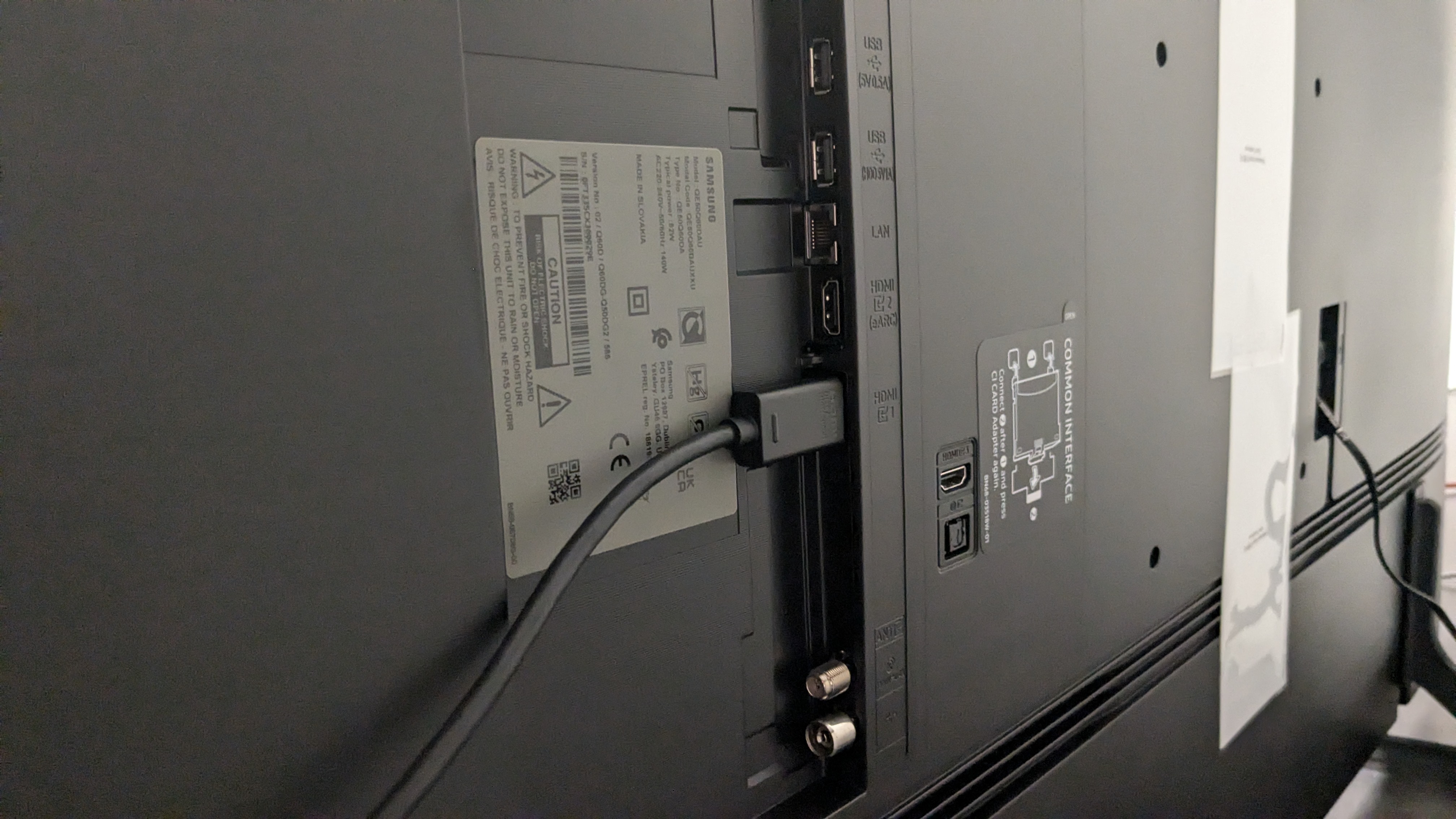
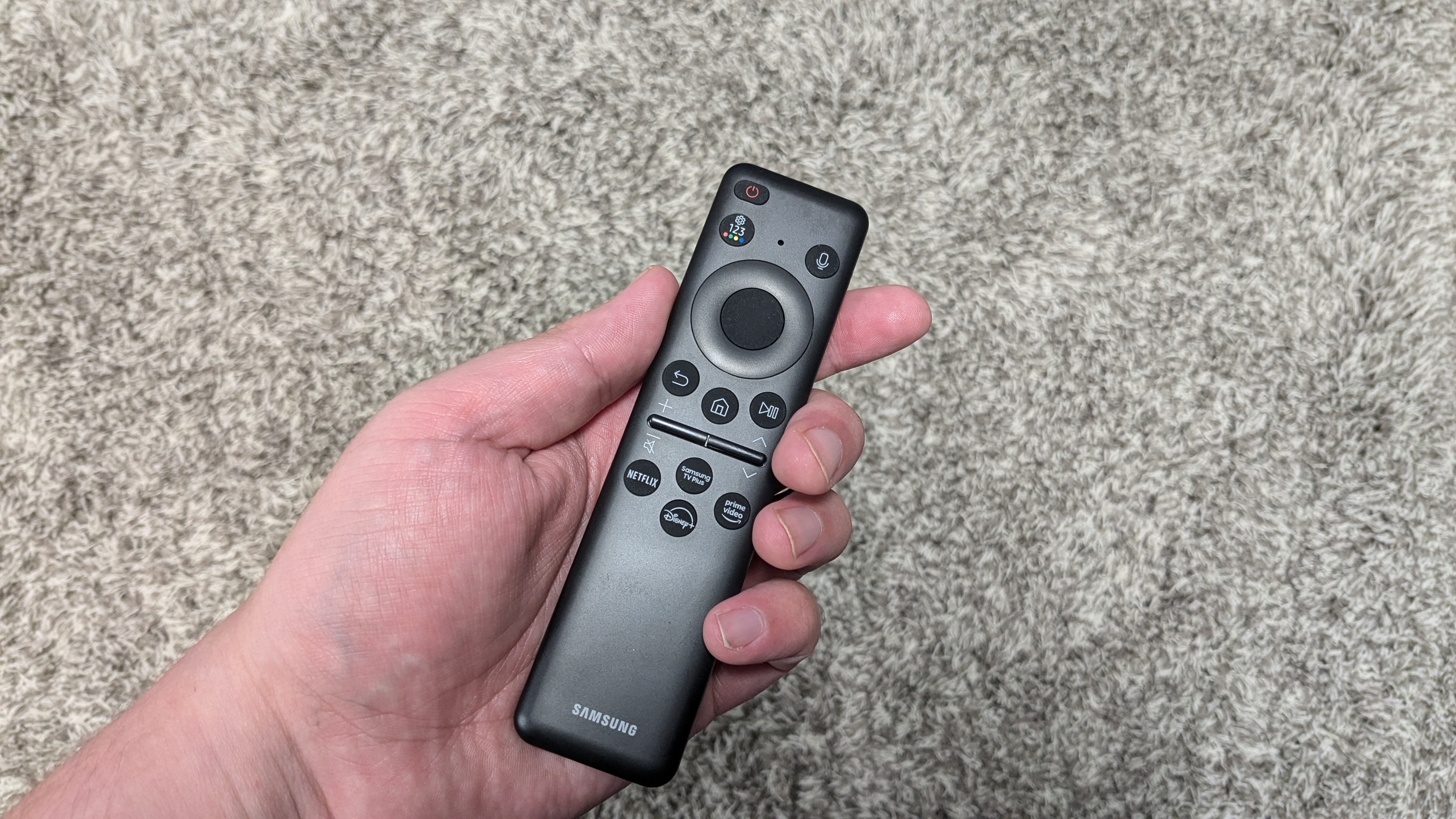
Specifications
Reasons to buy
Reasons to avoid
✅ You want a QLED TV on a budget: The Samsung Q60D gives you a TV with QLED screen tech cheaper than any other Samsung model.
✅ You want a cheap TV that also looks good: The Samsung Q60D has an appealing design you won't often find at this price range.
❌ You want the best Samsung TV for gaming: The Samsung Q60D is missing some key gaming features including 4K 120Hz and VRR.
❌You don't want to use a soundbar: The Samsung Q60D's built-in sound is on the thin side, lacking bass and immersion due to its limited speaker array.
The Samsung Q60D is the best value TV in Samsung's 2024 TV lineup, offering a QLED panel for brighter, more colorful pictures, a decent array of smart features, cloud gaming options, and an appealing design at an affordable price.
When we tested the Q60D, we were surprised at how good details and textures looked, even compared to more premium Samsung TVs such as the Samsung S95D and Samsung QN90D. We were also impressed by its color, which we found to have "plenty of punch while also maintaining a natural look". Black levels and contrast were also solid for the price range thanks to the Q60D's Dual LED tech, although shadows did take on a gray wash with dimmer images.
The Q60D is fairly light on gaming features, with no 4K 120Hz or VRR support –features found in step-up Samsung TVs – but it does support ALLM and cloud gaming options from Xbox, Luna and more. Plus, it has an ultra-low 9.6ms input lag time. Bedroom gamers won't be disappointed with the Q60D.
It also has an appealing design with a slim profile and trim bezel that give it a more premium look than you'd expect at this price. Unfortunately, the Q60D suffers from thin sound and it faces stiff competition from cheap mini-LEDs such as the Hisense U6N and Hisense U7N, but it's still a great, affordable option and the best cheap Samsung TV overall.
Read our full Samsung Q60D review
The best mid-range Samsung TV
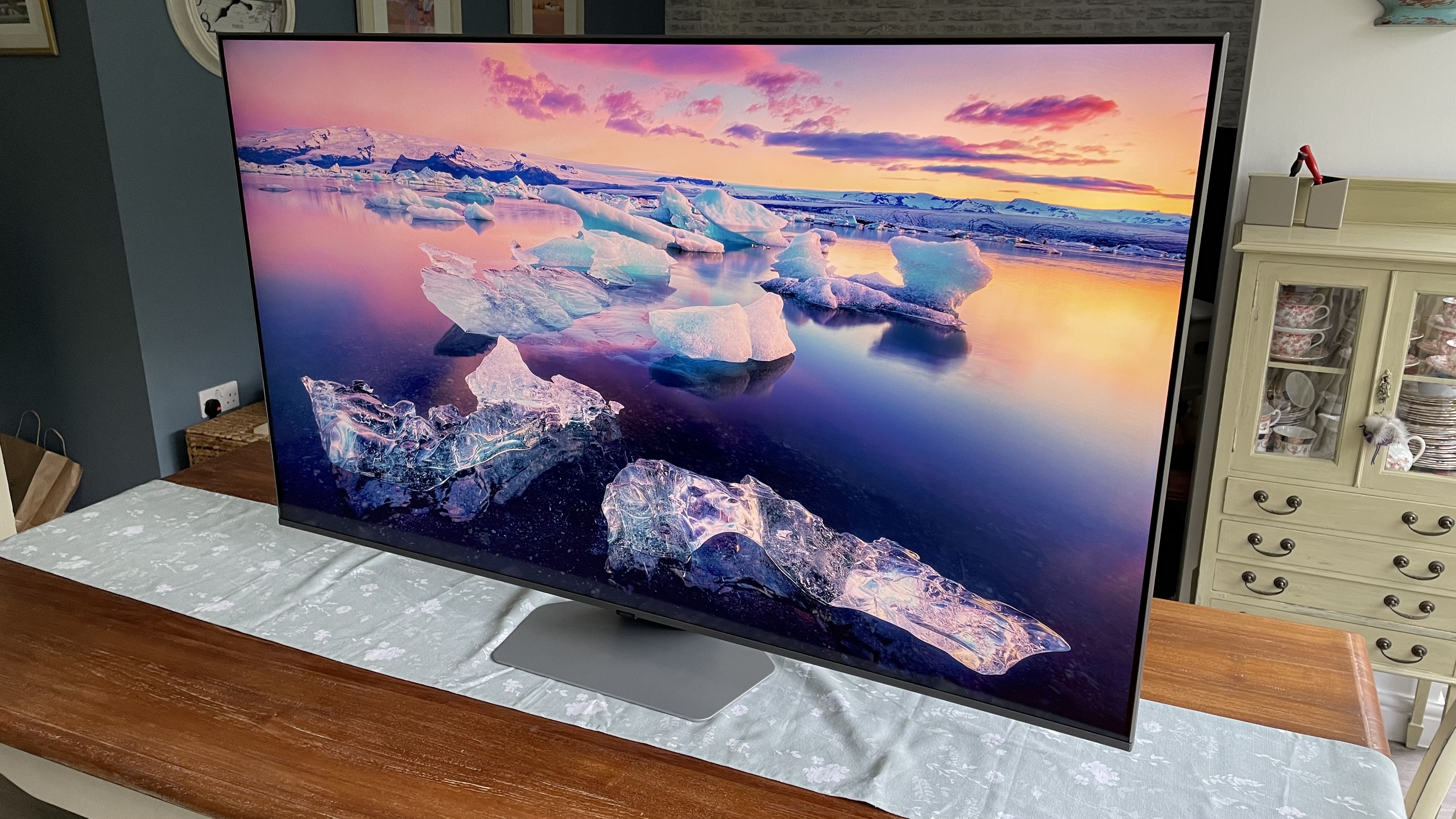
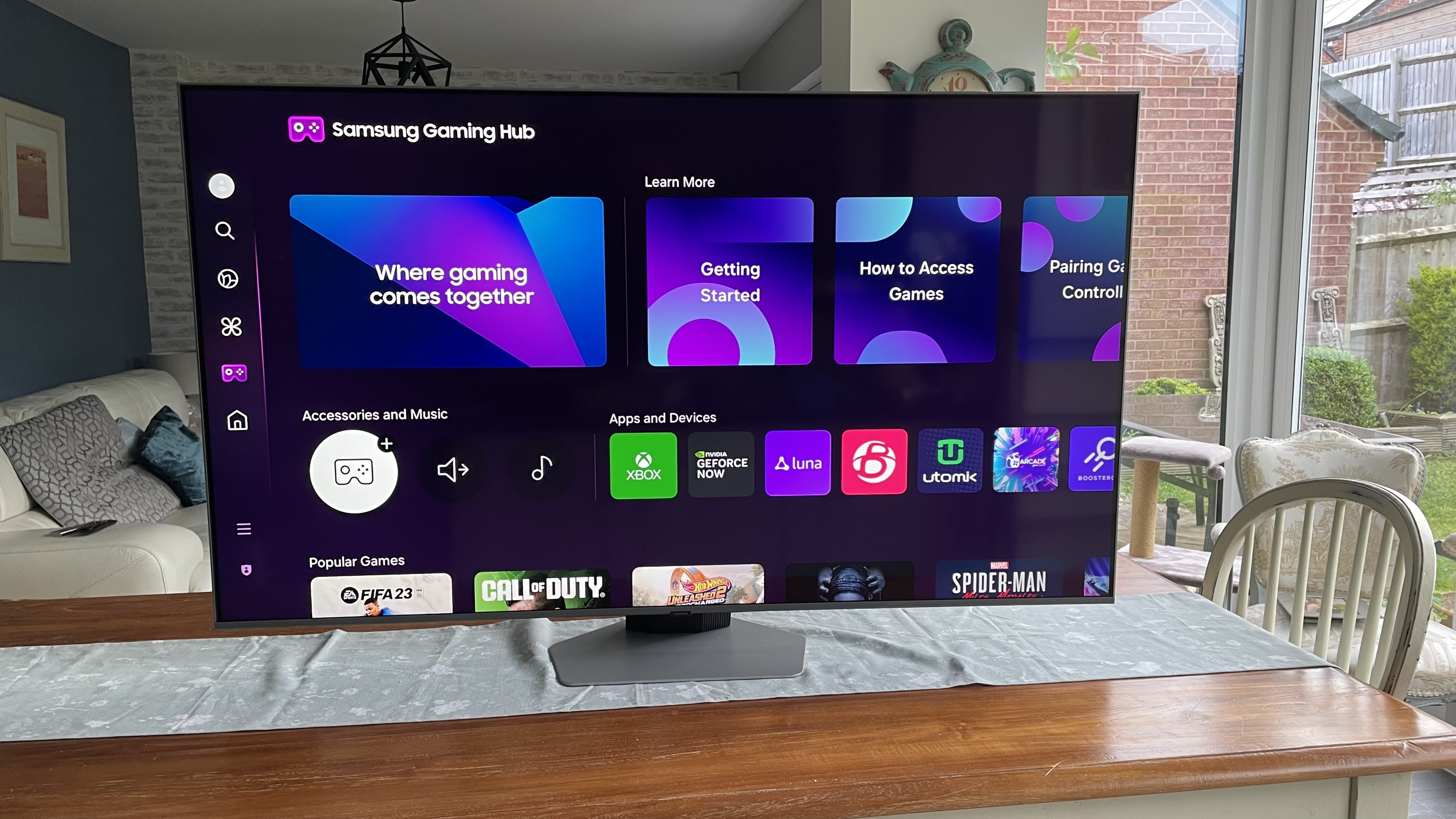
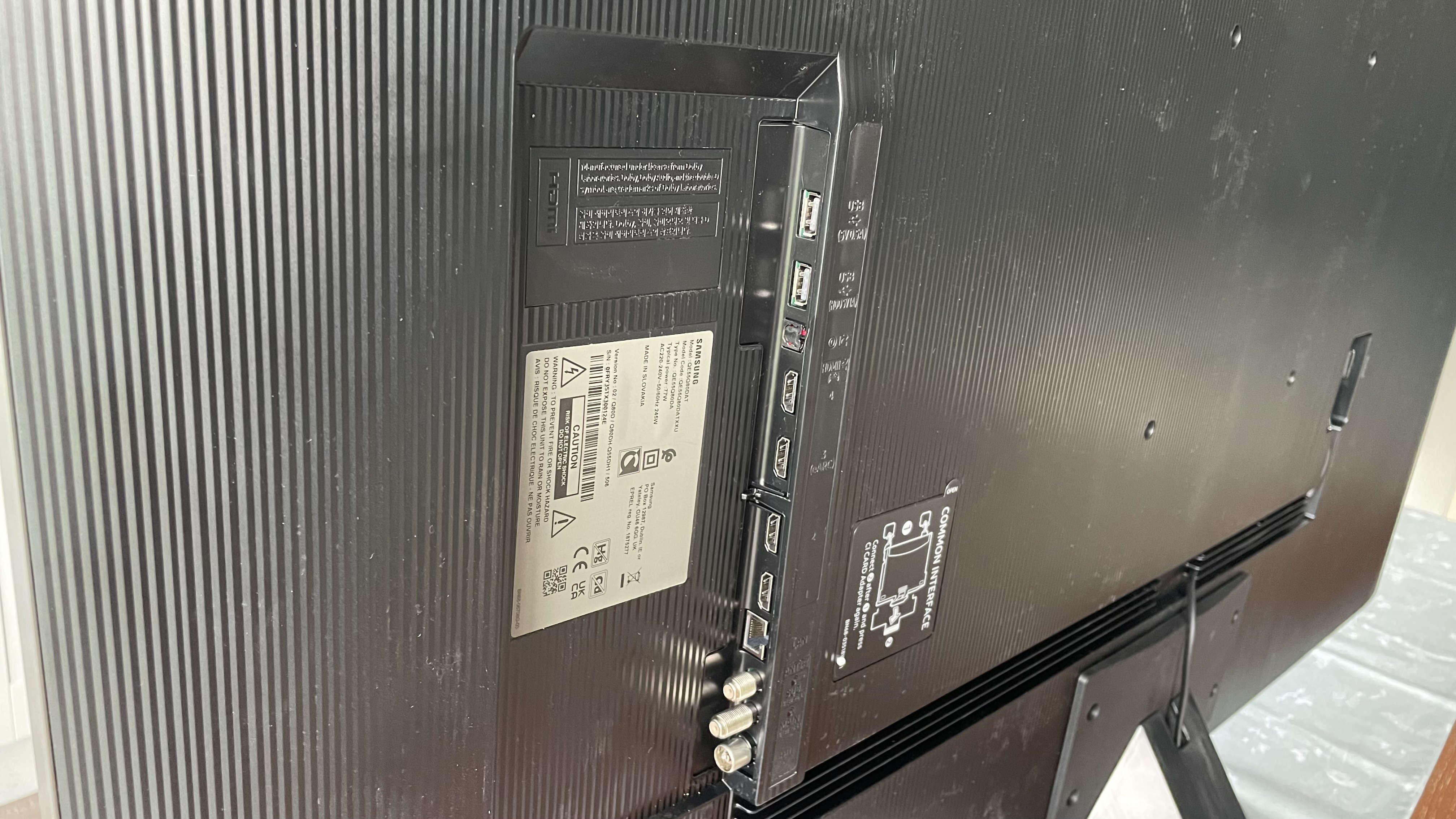
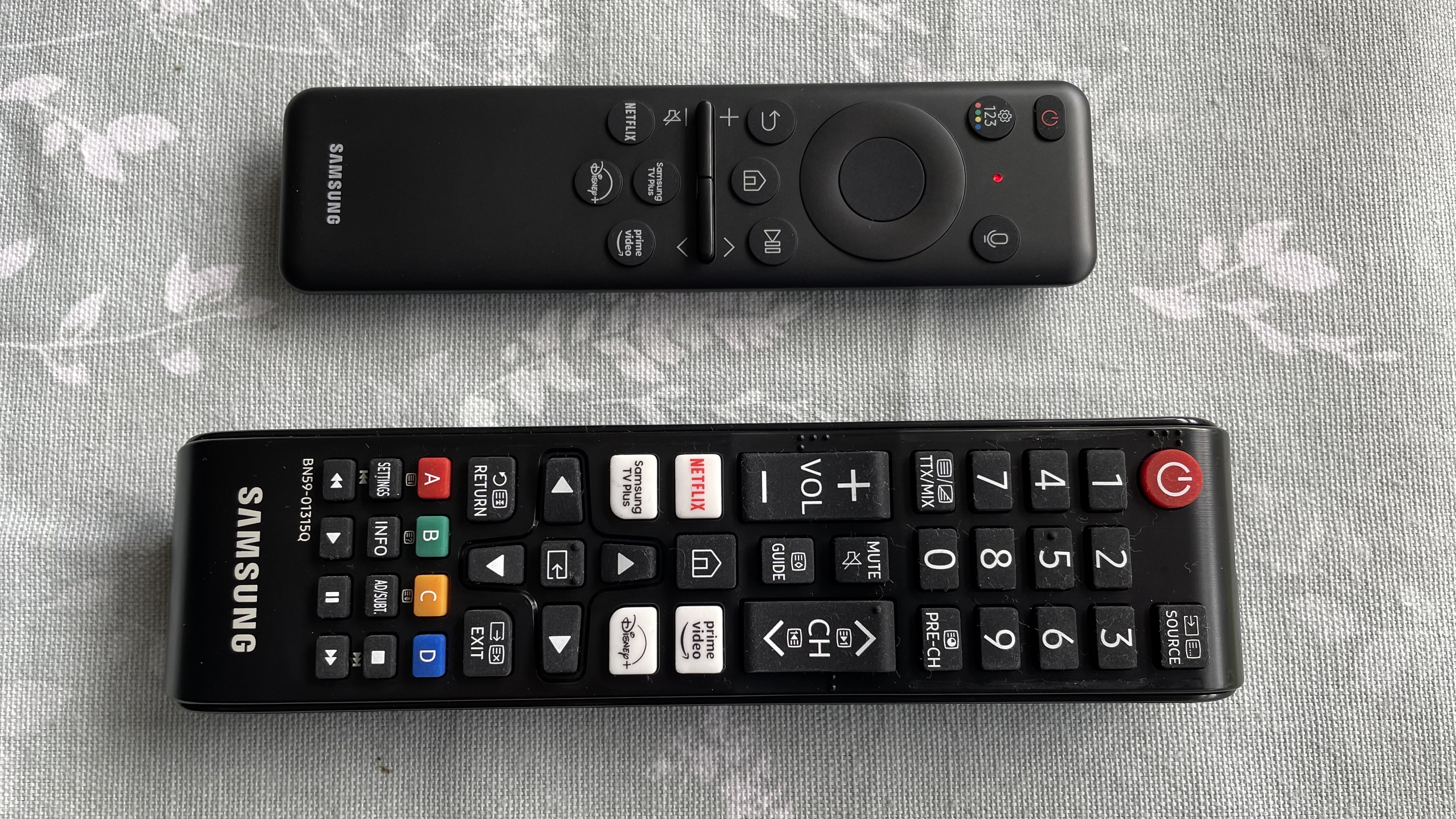
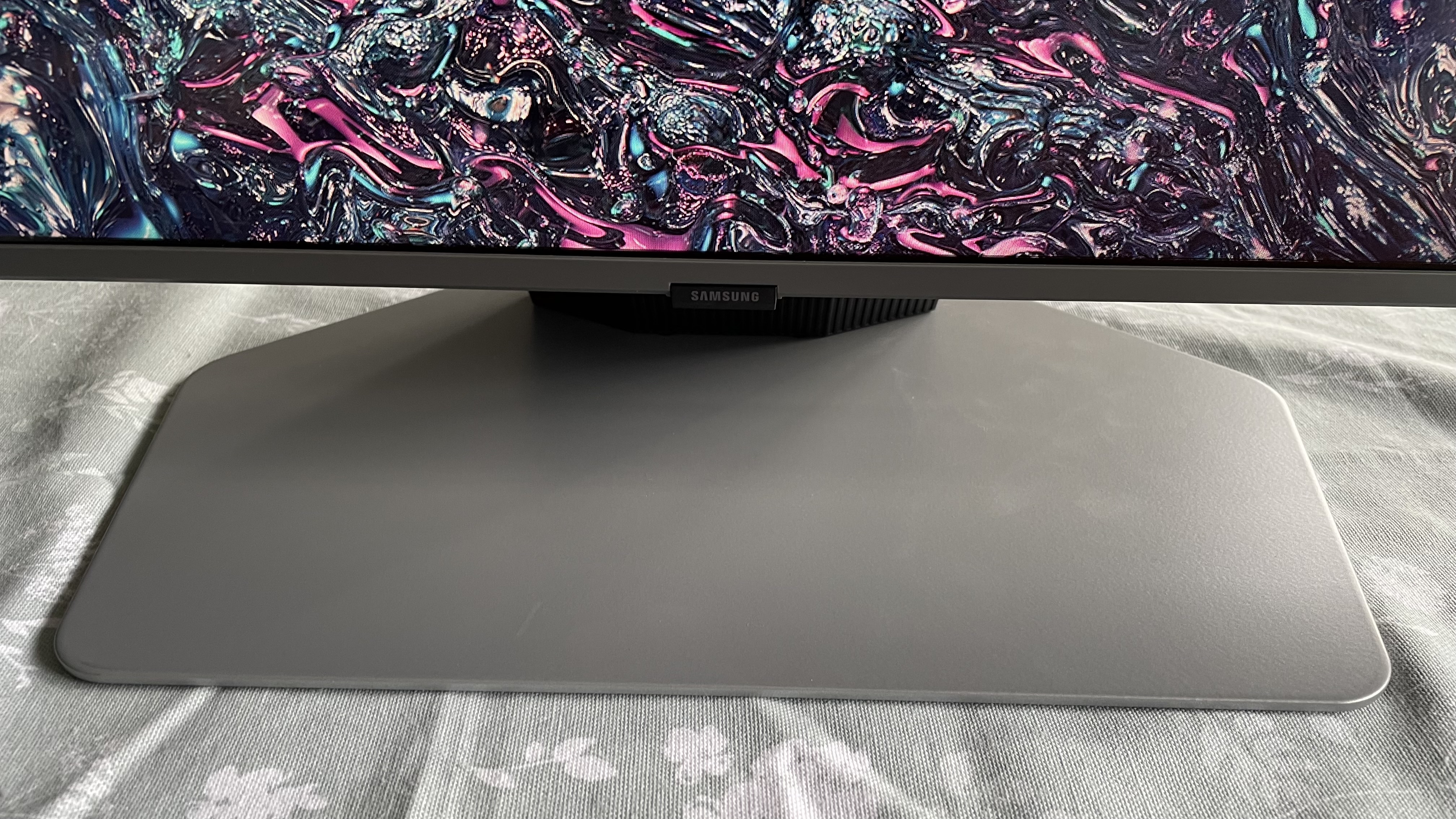
Specifications
Reasons to buy
Reasons to avoid
✅ You want a well-equipped TV for the money: The Samsung Q80D has a QLED display panel and substantial gaming features including four HDMI 2.1 ports with 4K 120Hz support.
✅ You want a premium picture at a cheaper price: The Samsung Q80D delivers better color, contrast and detail than many other mid-range TVs.
❌ You don't want to spend time in the settings: To get the best out of the Samsung Q80D, we found that some tinkering with the settings, particularly with color, was required. But, it's worth it in the end.
❌You watch from an angle: The Samsung Q80D uses a VA LCD panel and while it's better than some others, viewing at an angle still reveals some contrast fade.
The Samsung Q80 range has been the hidden gem in Samsung's extensive TV lineup for a couple of years now, offering a near complete package of performance and features at an affordable, mid-range price – and the Q80D is no different.
The Q80D uses a QLED panel and while this can sometimes result in inconsistent contrast and black levels (compared to mini-LED and OLED especially), the Q80D didn't suffer from this issue during our time testing it. We found that it delivers rich contrast and effective, accurate black levels, avoiding the gray 'wash' that can sometimes plague LED and QLED TVs. The Q80D's colors are also vibrant, punchy and accurate (admittedly after some tweaking). Picture-wise, the Q80D outperforms its mid-range price compared to its peers.
Gaming is also well covered by the Q80D as well, with four HDMI 2.1 ports supporting 4K, 120Hz, VRR (including AMD FreeSync Premium) ALLM and the ever-useful Samsung Game Hub. We measured a strikingly low 9.8ms input lag time, rivalling even some of the most premium mini-LED and OLED sets on the market.
It's not absolute perfection for the Q80D, as there is some fading of contrast when viewed off-axis, and it doesn't have the same premium thin design as other Samsung models, but these are its only real drawbacks – even built-in sound quality is surprisingly solid all-around. The Q80D once again is a hidden gem and will prove to be one of the popular mid-range options of 2024 – it's definitely the best in Samsung's lineup.
Read our full Samsung Q80D review
The best 8K Samsung TV
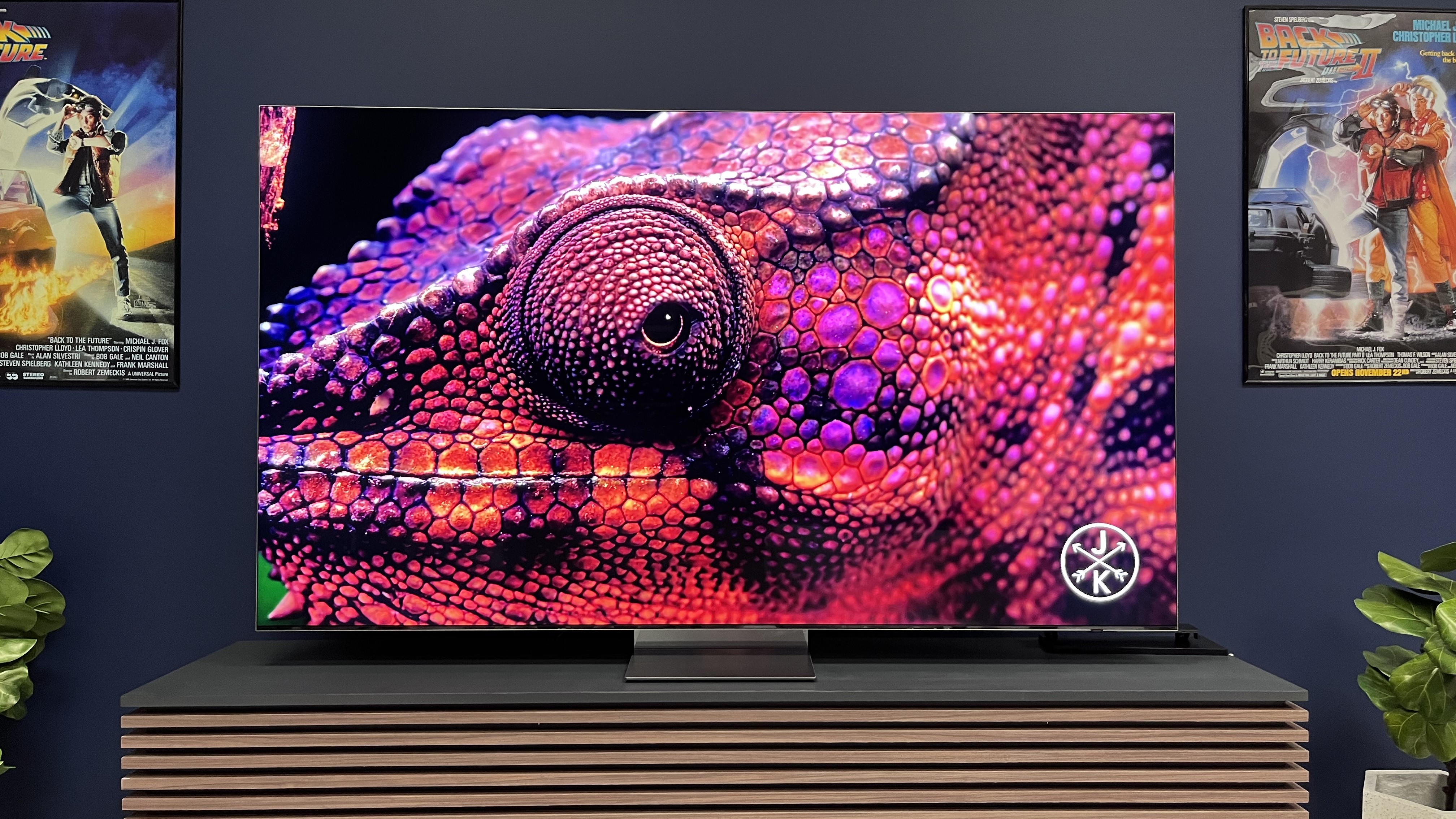
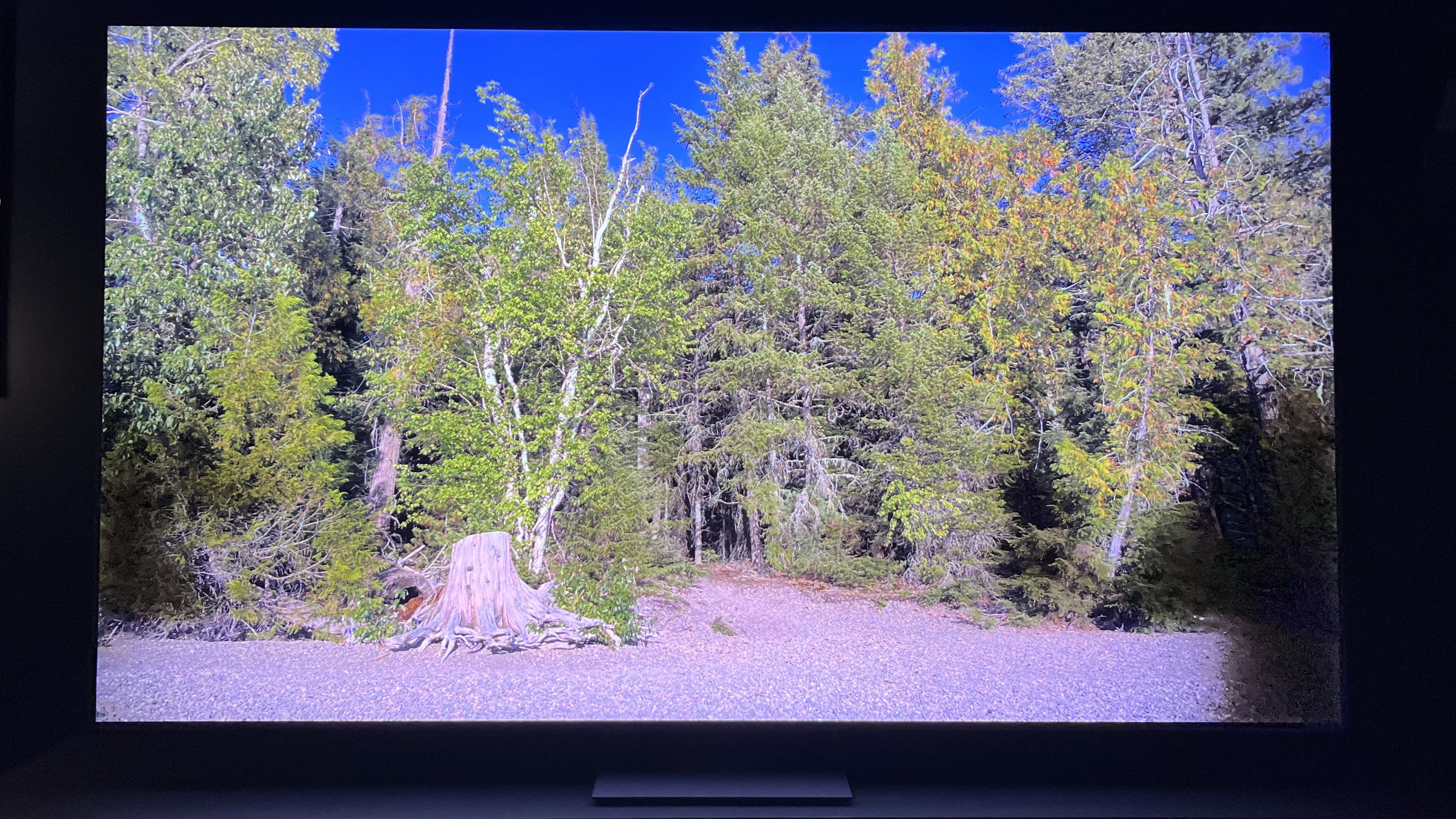
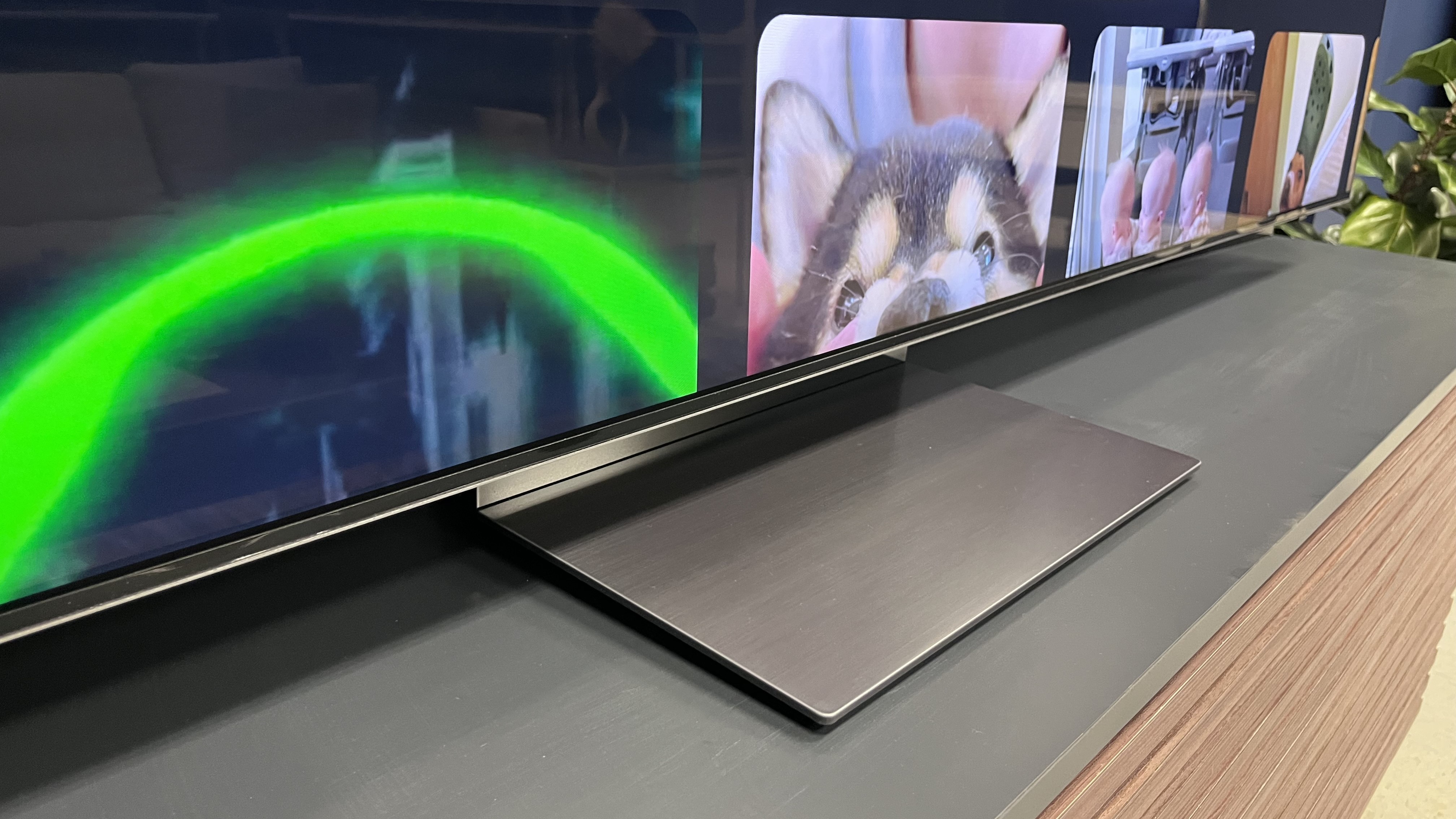
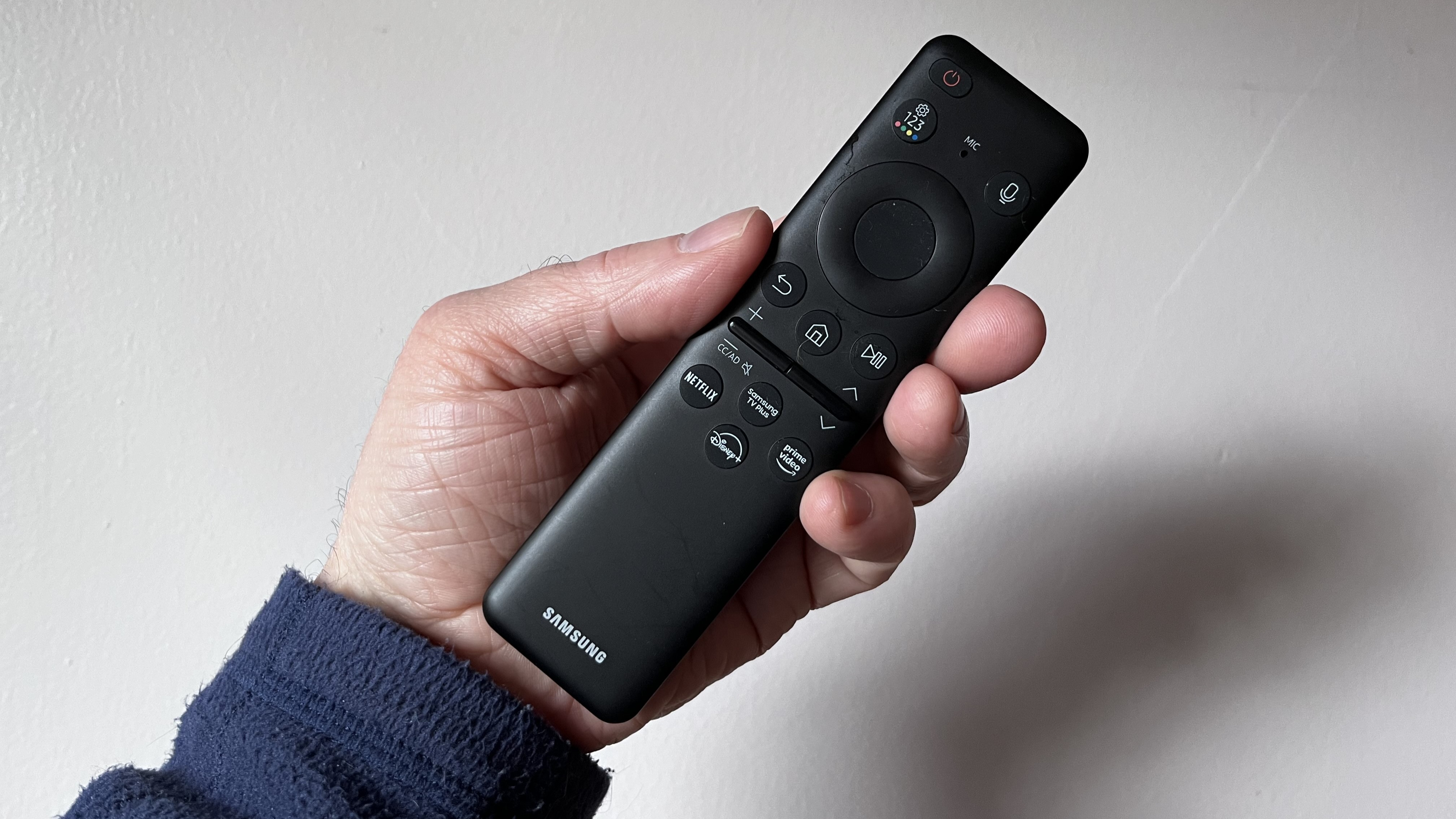
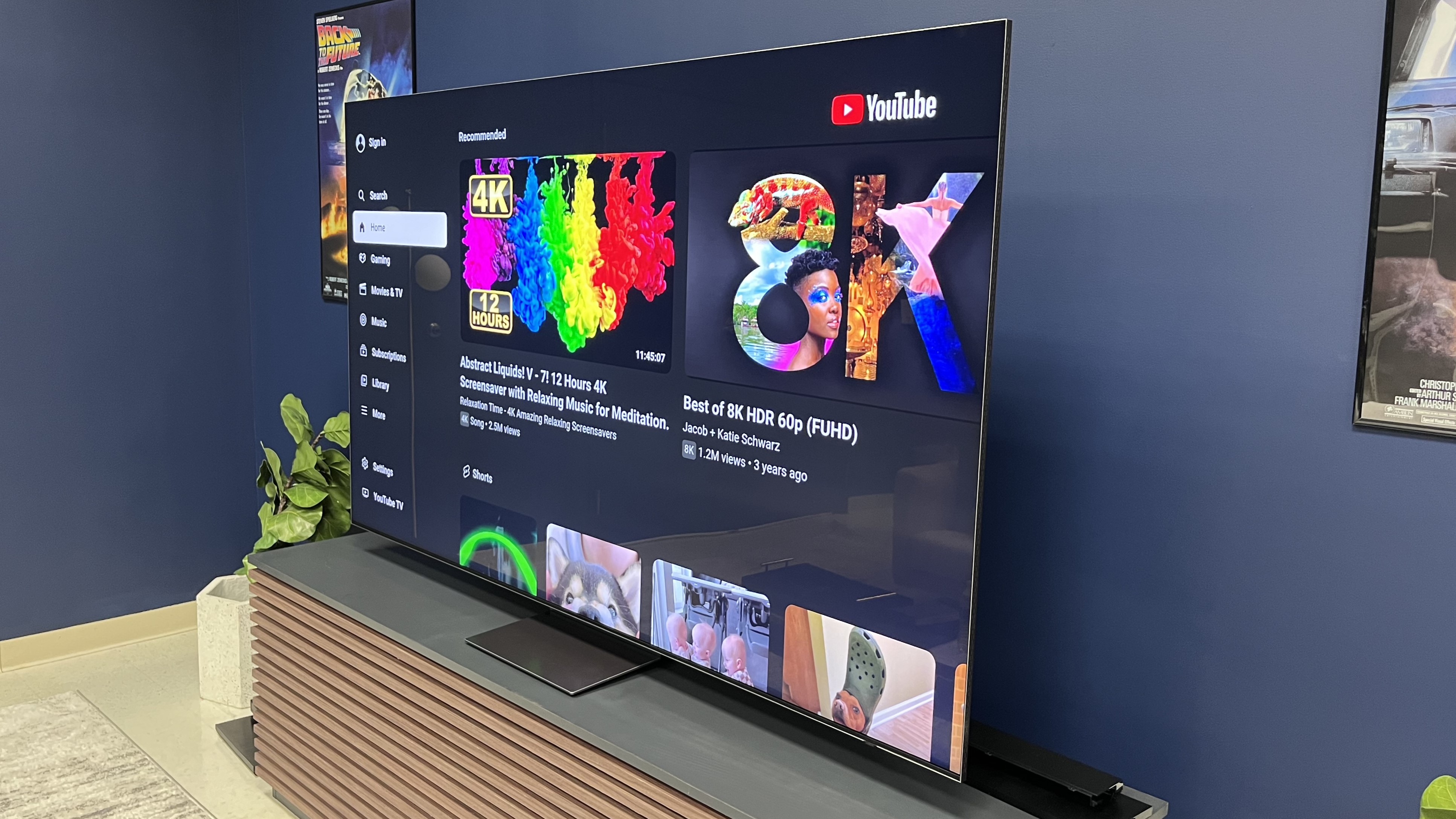
Specifications
Reasons to buy
Reasons to avoid
✅ You want an out-of-this-world picture: Although 8K movies and TV shows are scarce, the Samsung QN900D's upconversion of 4K sources is nothing short of spectacular.
✅ You want a unique PC gaming experience: The QN900D is well-equipped for gaming all around, and it also uniquely features 4K 240Hz support.
❌ You want the best value Samsung TV: The Samsung QN900D is not cheap and despite its amazing quality, other sets like the Samsung QN90D and Samsung S95D are better value.
❌You want the best built-in sound: While its speakers are good, we found the QN900D did lack bass heft – disappointing at this price range.
The Samsung QN900D is a premium experience. It's effective 8K upscaling, excellent details, premium design and full suite of gaming features go that one step further than equivalent 4K TVs can do, resulting in the five-star rating in our review – but that upgrade comes at a serious step-up in price.
The first thing you notice on the QN900D is its breath-taking textures and details that take on a lifelike look. This is thanks to its Real Depth Enhancer Pro AI feature, that sharpens images to this lifelike state, combined with its excellent 8K upscaling, giving 4K sources that extra depth. It also has deep contrast, brilliant colors and superb motion handling when viewing sports. The QN900D really does everything with its picture.
At this level, you'd hope for an excellent gaming experience – and the QN900D delivers. Not only does it have the four fully kitted HDMI 2.1 ports, with 4K, 120Hz, VRR (AMD FreeSync Premium Pro included) and ALLM, but it also has a model-exclusive feature: 240Hz refresh rate for PC gaming. It also features the lauded Samsung Game Hub that has access to plenty of cloud gaming apps.
Of course, the QN900D's main kryptonite is its price tag. For all these features and an 8K panel, you're looking at paying a real premium – at least double what the highest-end 4K Neo QLED set costs – but if you can stretch your budget to this level, the QN900D is worth every penny and then some.
Read our full Samsung QN900D review
The best cheaper 8K Samsung TV
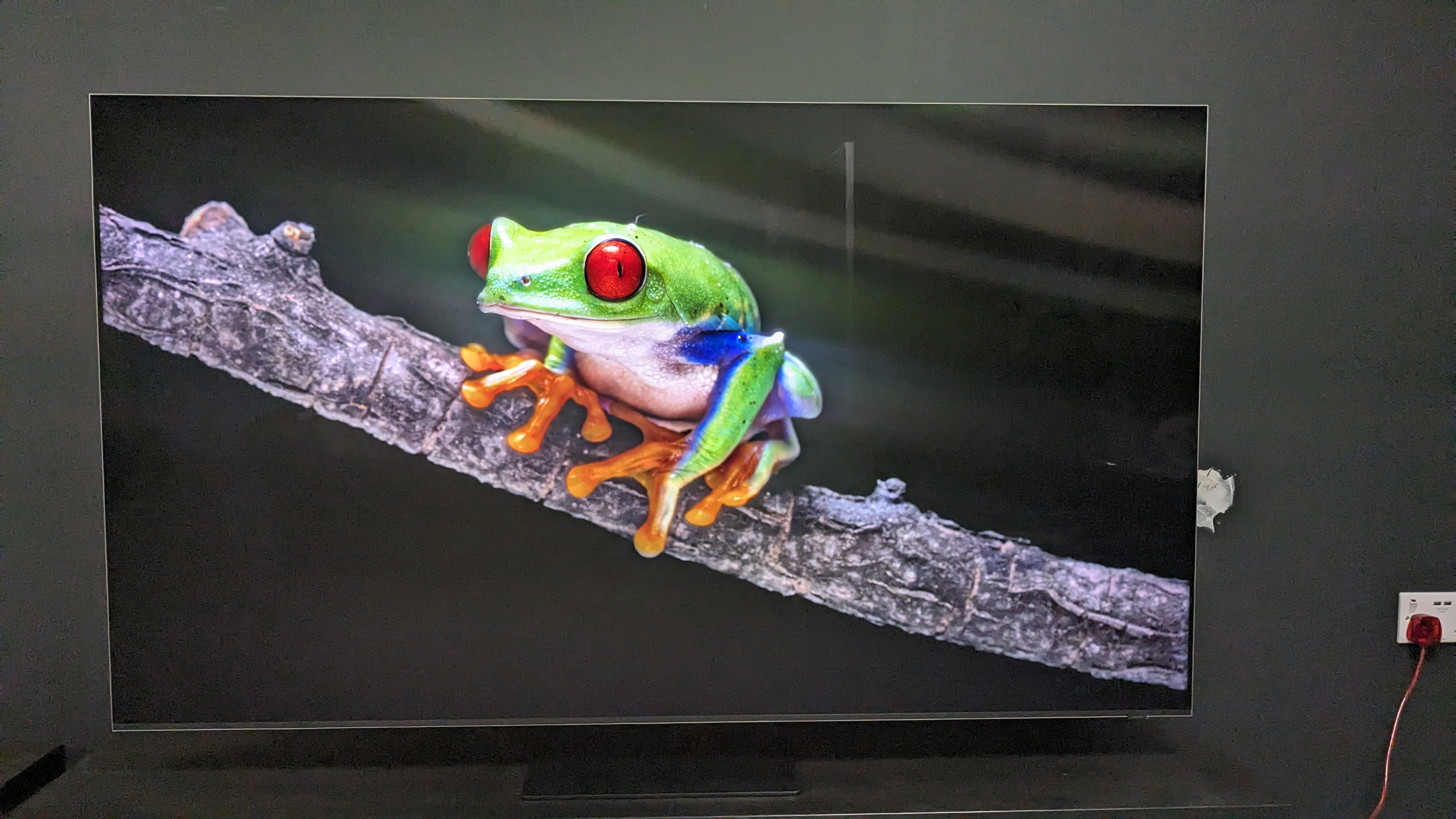
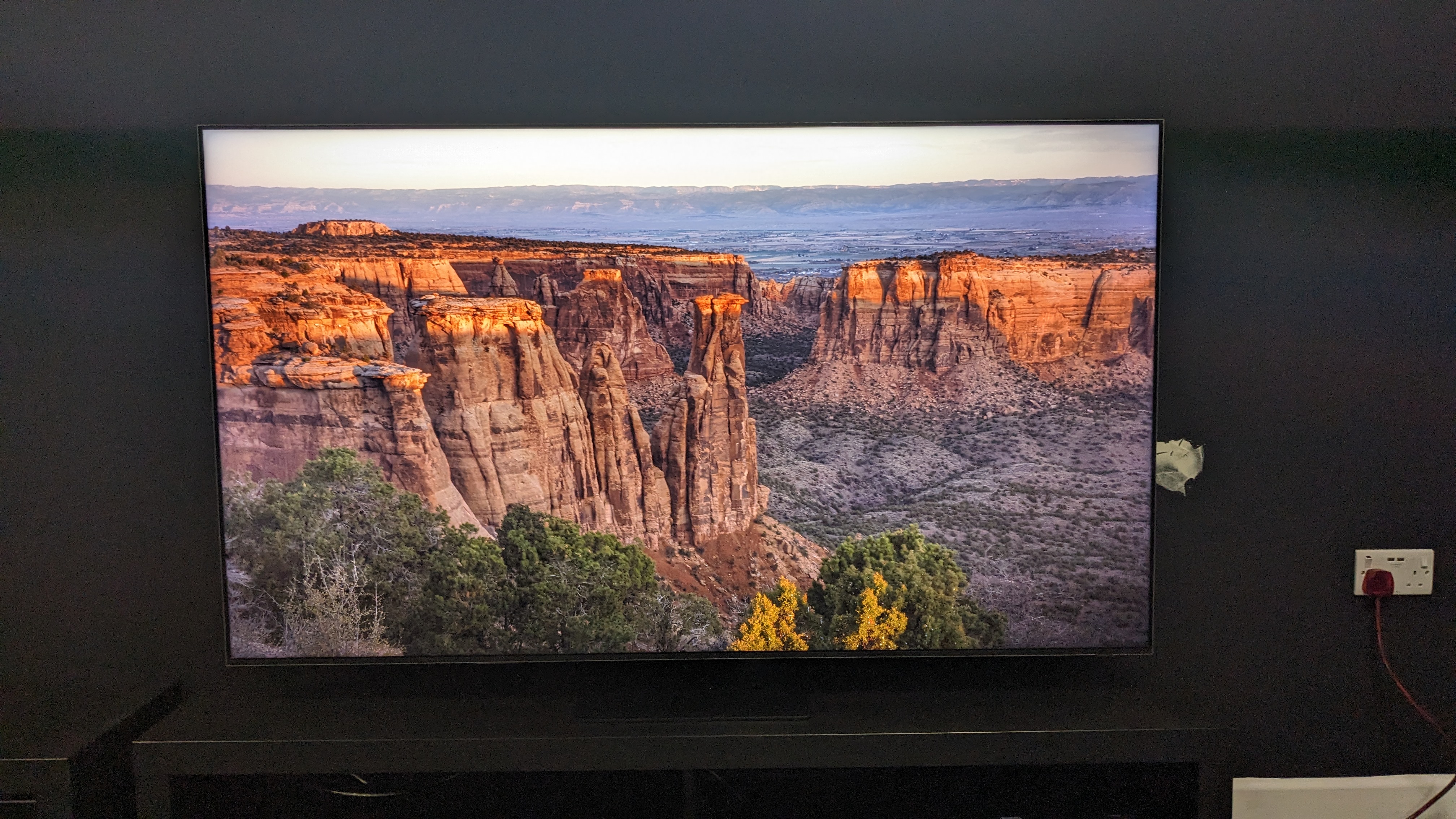
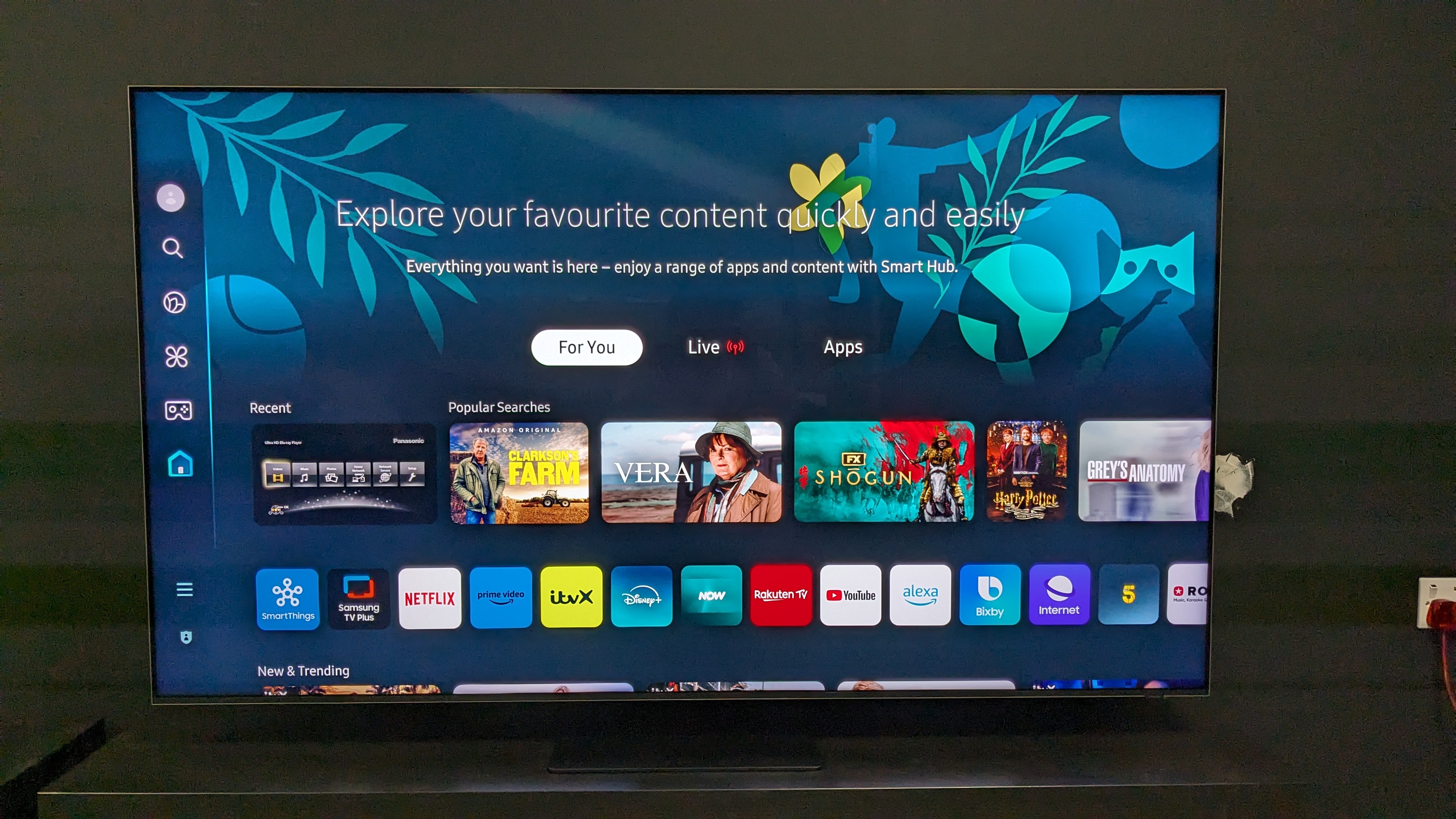
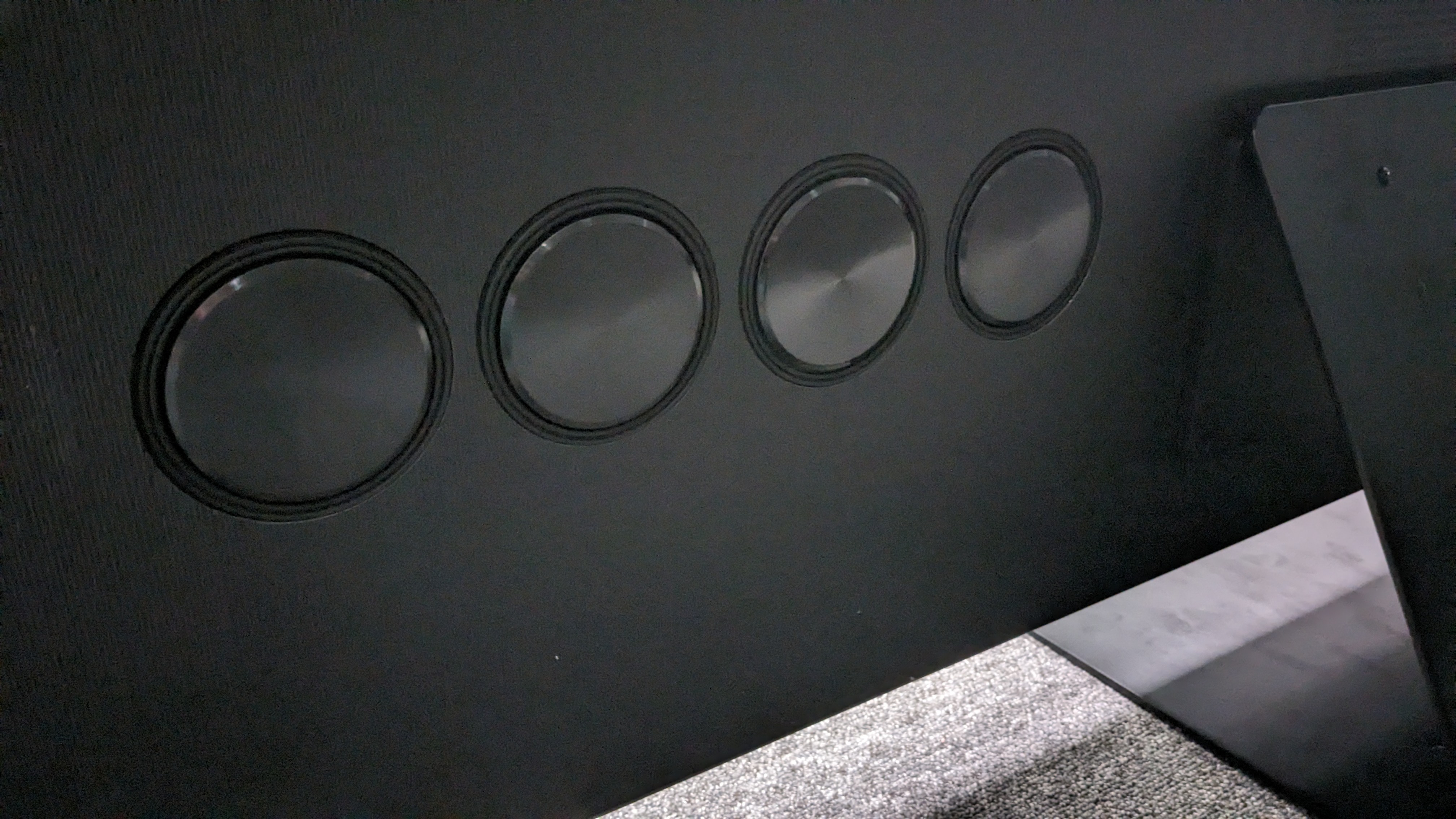
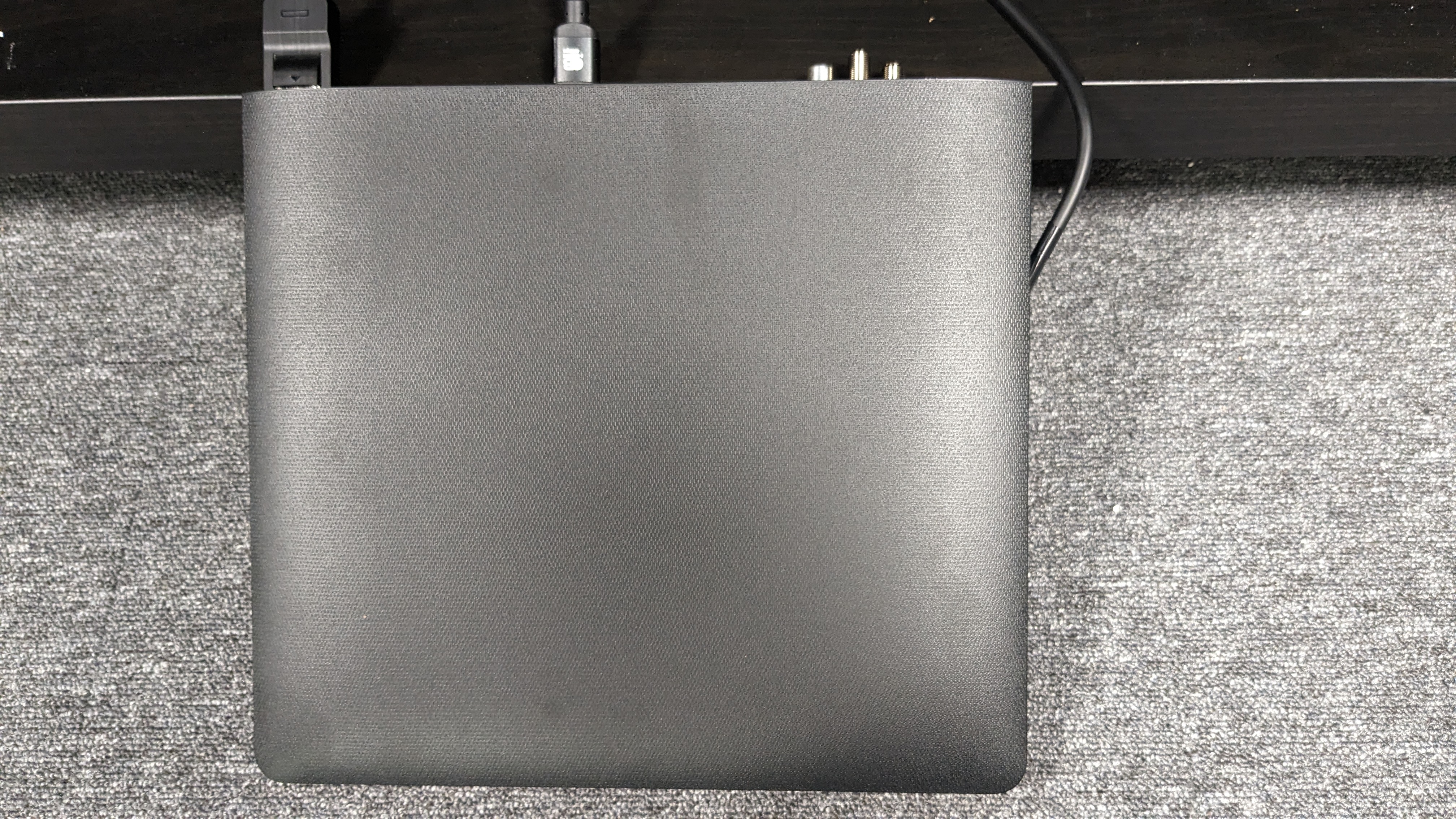
Specifications
Reasons to buy
Reasons to avoid
✅ You want an 8K TV for cheaper: Although still at a premium price, the Samsung QN800D is one of the cheaper 8K TVs available.
✅ You want a step-up over 4K: The Samsung QN800D has fantastic upscaling, giving 4K sources even better detail, color and brightness than you'd find on most 4K models.
❌ You're on a budget: Although prices have dropped, the QN800D is undoubtedly pricey and will still outstretch most budgets.
❌You want hassle-free installation: We found during our testing that installing the TV's stand wasn't easy due to its hefty weight and awkward positioning.
The QN800D may not hit the same spectacular performance levels of its more premium 8K counterpart, the QN900D, but it is still an outstanding TV in its own right – and offers stunning 8K textures at a slightly more affordable (though still expensive) price.
Much like the QN900D, the QN800D has exceptional object detailing, capturing the same lifelike appearance. Its 8K upscaling is extremely effective to make this work, taking 4K pictures to the next level. It also features excellent local dimming, showcasing great contrast and black levels, while its bold, vivid colors suit HDR movies and pictures as well. There is some minor backlight blooming present, but it's generally expected with mini-LED – and we found the QN800D's to be better than normal in our testing.
Also similar to the QN900D, the QN800D's gaming performance and features are superb. It has four HDMI 2.1 ports, with not only 4K 120Hz, but also 8K 60Hz, VRR (including AMD FreeSync Premium Pro), auto low latency mode, and Samsung's Game Hub. It also has plenty of cloud gaming options from Xbox, Nvidia GeForce Now, Luna and more. It carries across its impressive picture quality from movies to games too, especially textures.
Of course, because it's an 8K TV, the QN800D carries a high price tag that overshadows its 4K cousins. However, it is noticeably cheaper than the more premium QN900D (roughly $1,000/£1,000 cheaper!) and while not achieving quite the same stunning results, the QN800D still ticks pretty much every box and its picture really is a sight to behold – it's an 8K marvel in its own right. If you can't quite get to the QN900D with your budget, the QN800D won't let you down and will save some money doing it.
Read our full Samsung QN800D review
The best 4K mini-LED Samsung TV
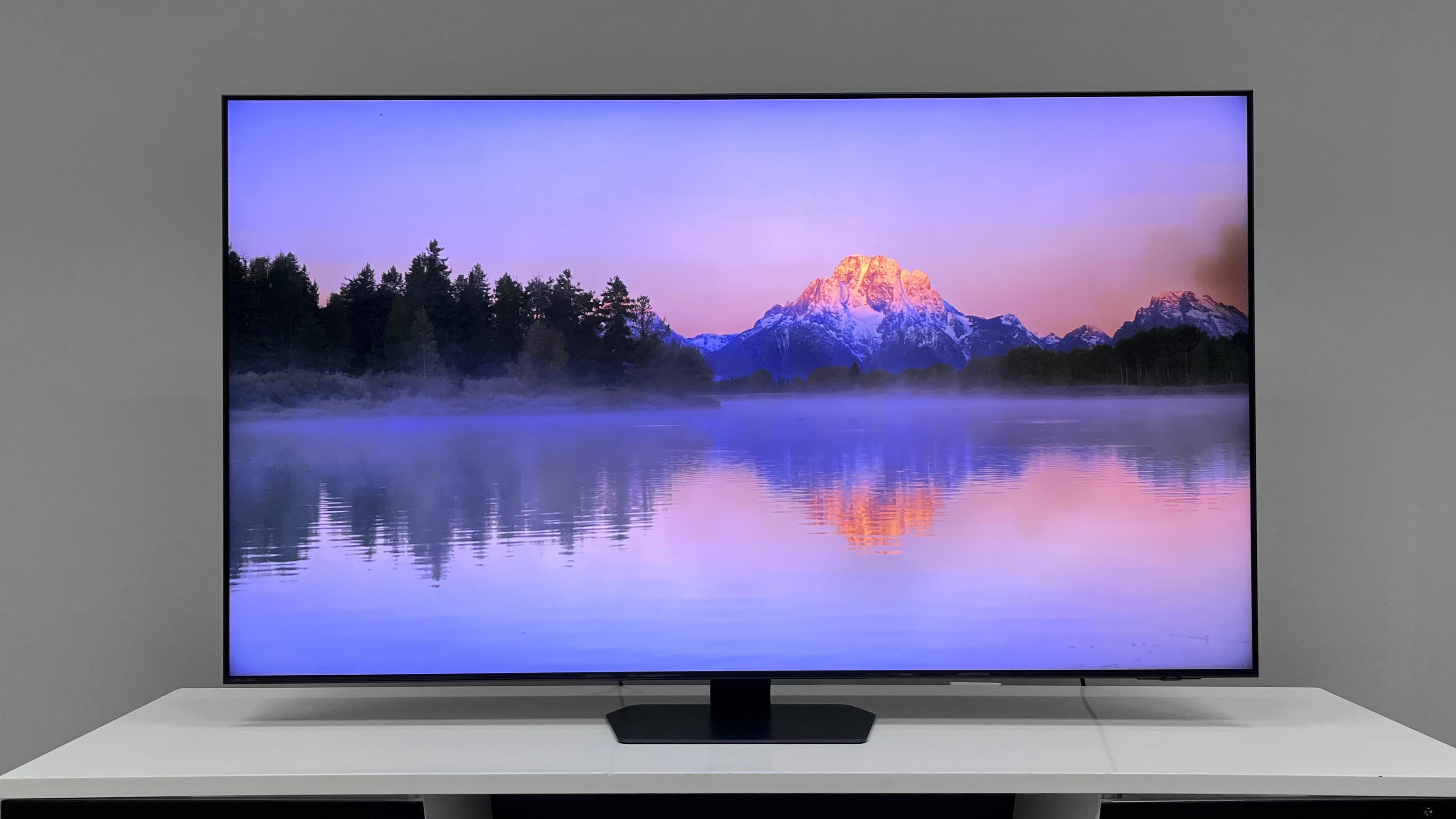
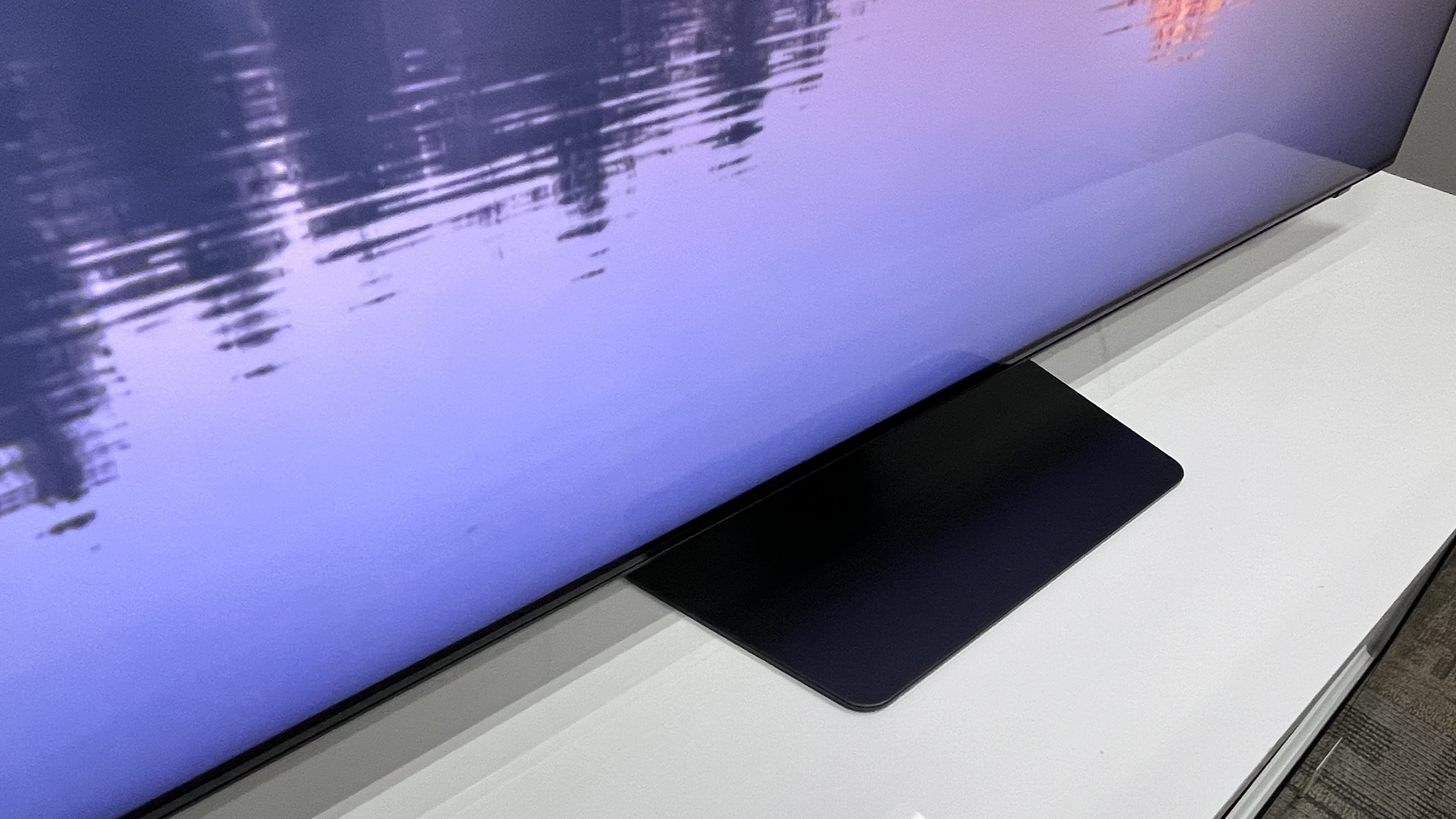
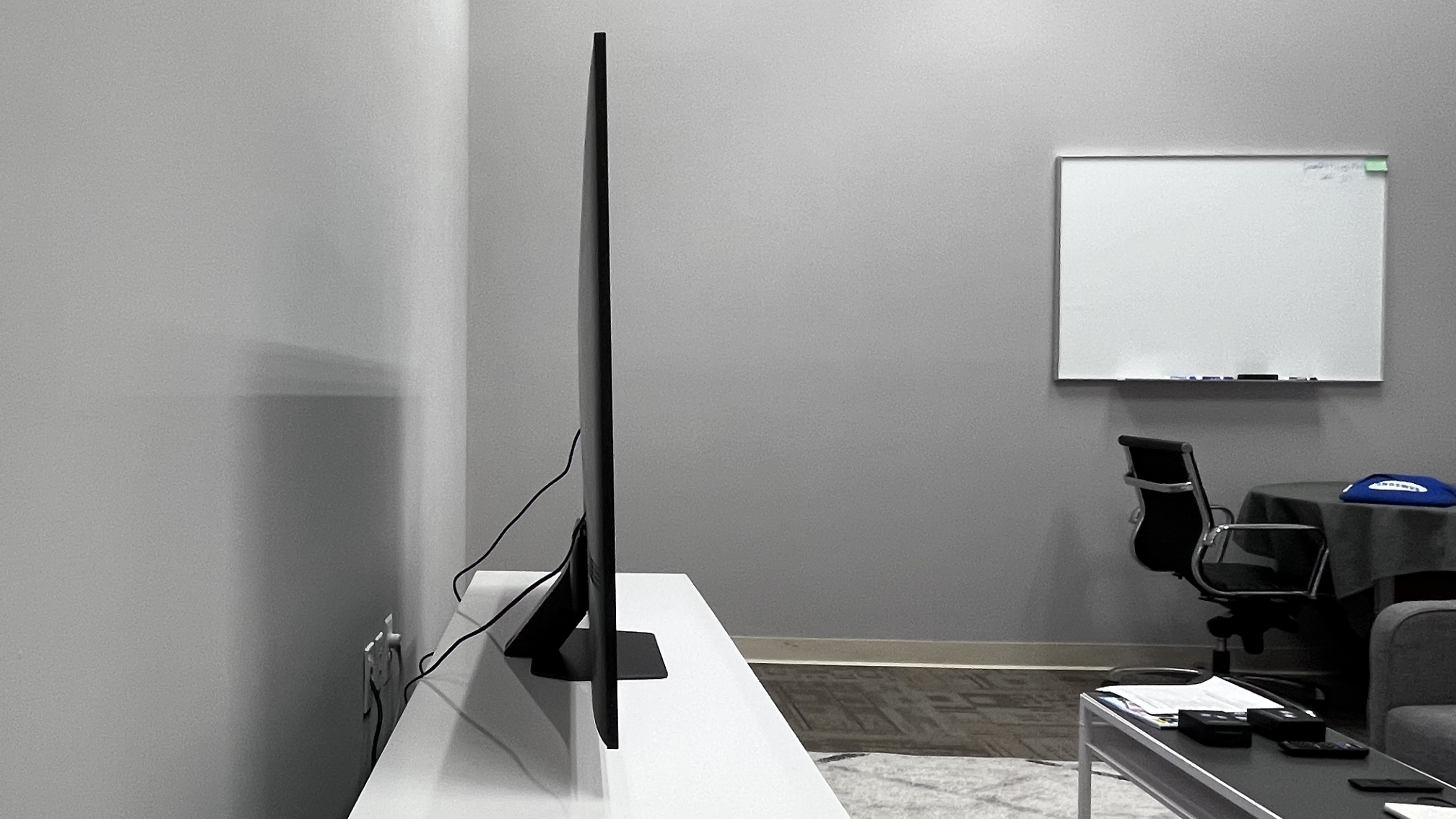
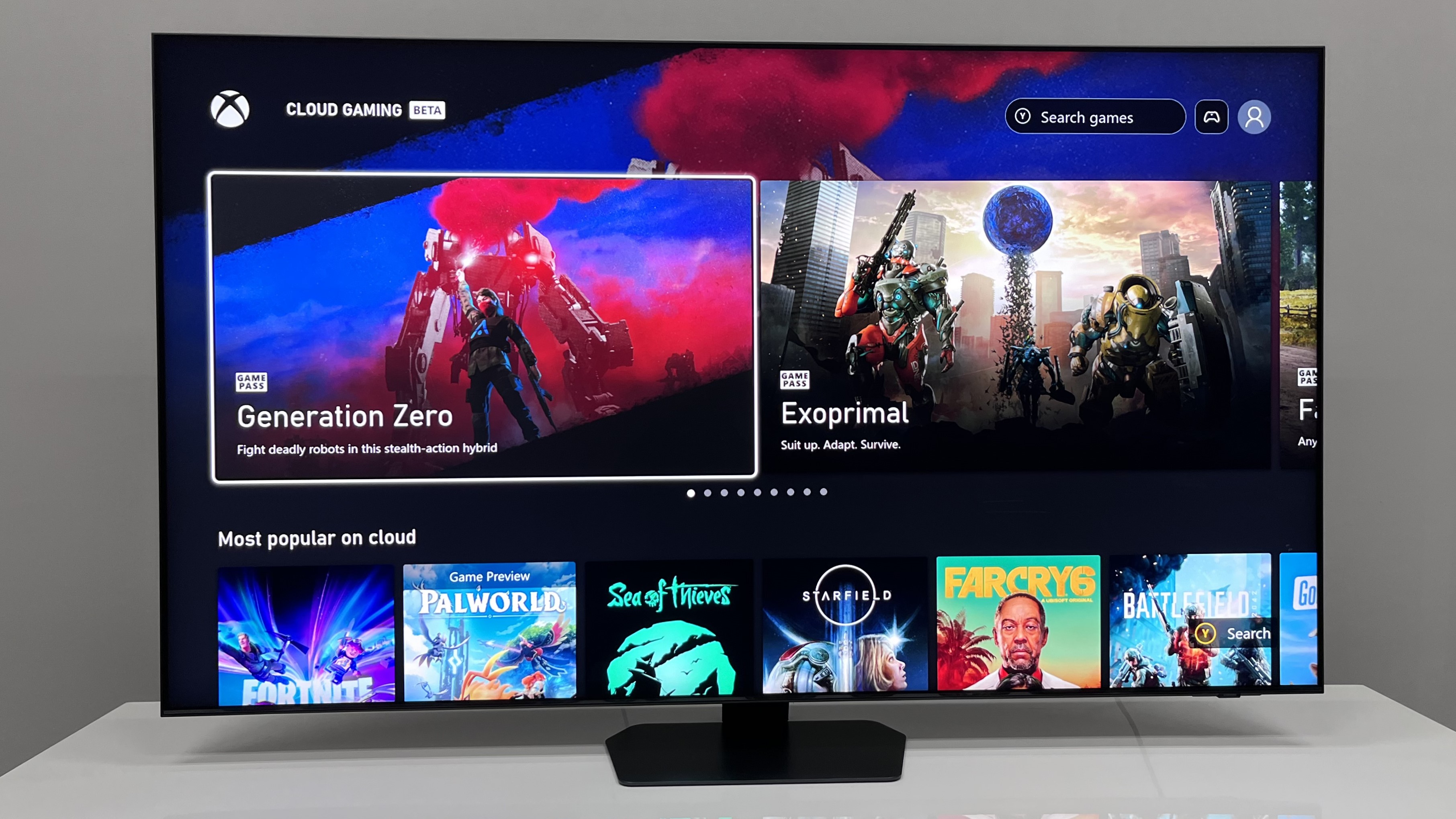
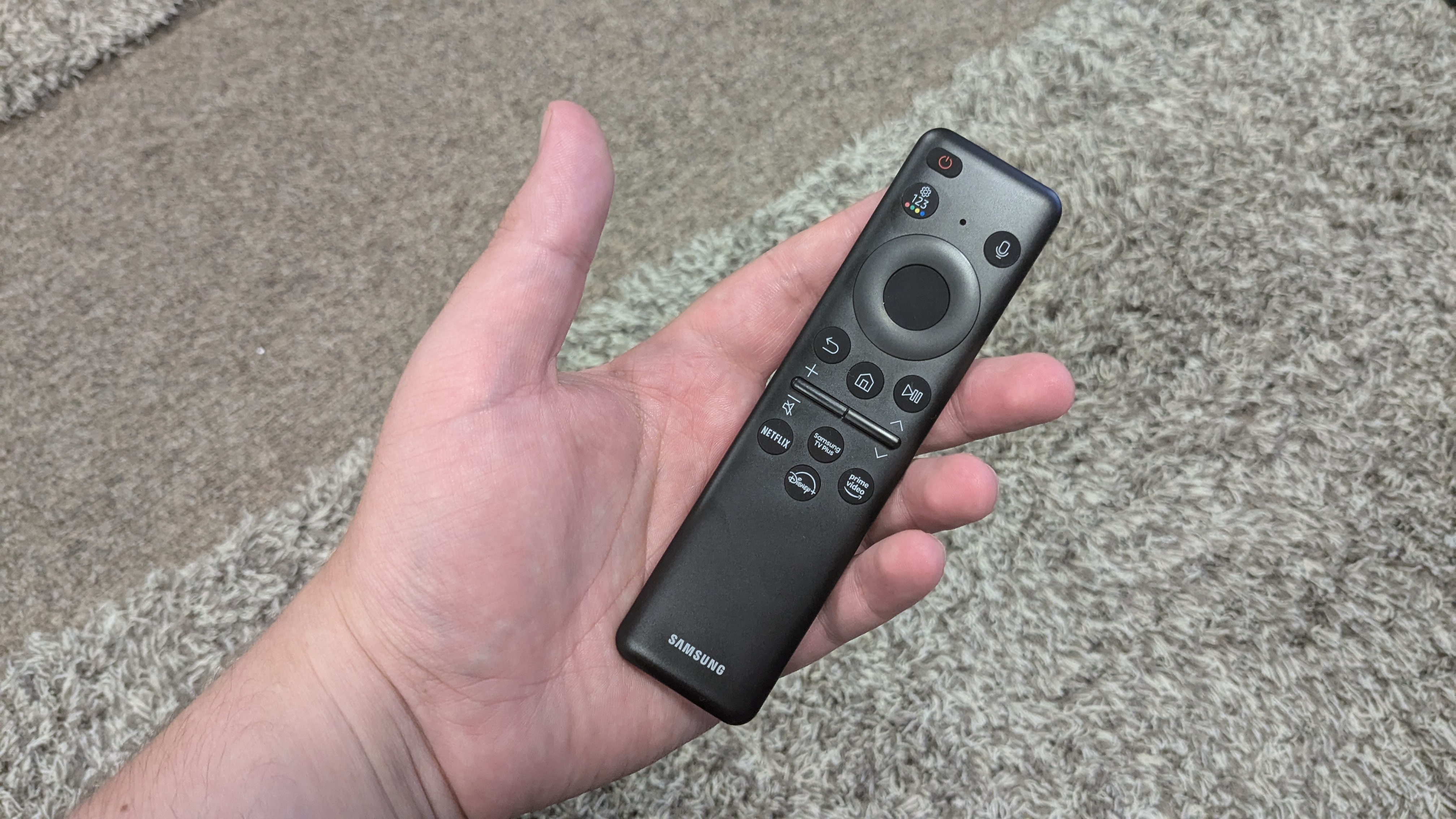
Specifications
Reasons to buy
Reasons to avoid
✅ You watch a lot of sports: The Samsung QN90D has superb motion handling and that plus its high brightness makes it ideal for watching sports in a bright room.
✅ You want an excellent TV for gaming: The Samsung QN90D's great gaming features and performance and bright, mini-LED screen make it perfect for daytime gaming.
❌ You want the cheapest mini-LED TV on the market: There are budget mini-LED rivals from Hisense and TCL that offer similar features and performance for less than the QN90D.
❌You want the best picture quality available: Although its picture quality is brilliant overall, it doesn't quite hit the heights of the Samsung S95D or the QN900D and QN800D 8K models.
The Samsung QN90D is a great all-around mini-LED 4K TV, offering high brightness, solid black levels, and a comprehensive suite of gaming features. Its bright picture, anti-reflective screen, and wide viewing angle make it a perfect TV for viewing sports, and it’s available in screen sizes from 43 inches up to 98 inches to accommodate a range of viewing situations.
While the QN90D has a picture that stands out when viewed in bright rooms, it’s also great for movie-watching in dim environments. In our QN90D review, we said it “demonstrated deep blacks and rich contrast” and we also cited its “superb” shadow detail. A new NQ4 AI Gen2 Processor, the same one found in Samsung’s flagship S95D OLED TV, does a remarkable job fleshing out picture detail, and an Auto HDR Remastering feature effectively uses AI to add high dynamic range effects to standard dynamic range content.
The QN90D has an appealingly thin design with a substantial aluminum pedestal stand to keep it firmly in place. It also comes with Samsung’s SolarCell remote control, which uses an integrated solar panel and USB-C connection for charging in place of disposable batteries. A 4.2.2-channel, 60W speaker array delivers good overall sound, and Samsung’s Object Tracking Sound+ feature ensures that dialogue and sound effects accurately connect with the onscreen action.
Samsung TVs regularly rank among the best TVs for gaming and the QN90D continues that tradition by providing four HDMI 2.1 ports with 4K 120Hz (and up to 144Hz for PC gaming), VRR including AMD FreeSync Premium Pro, and ALLM support. Samsung’s Gaming Hub in the TV’s Tizen smart interface provides further cloud-based gaming options from Xbox, Nvidia GeForce Now and other services, and input lag is a low 9.9ms with the TV in Game mode.
Read our full Samsung QN90D review
The best affordable mini-LED Samsung TV
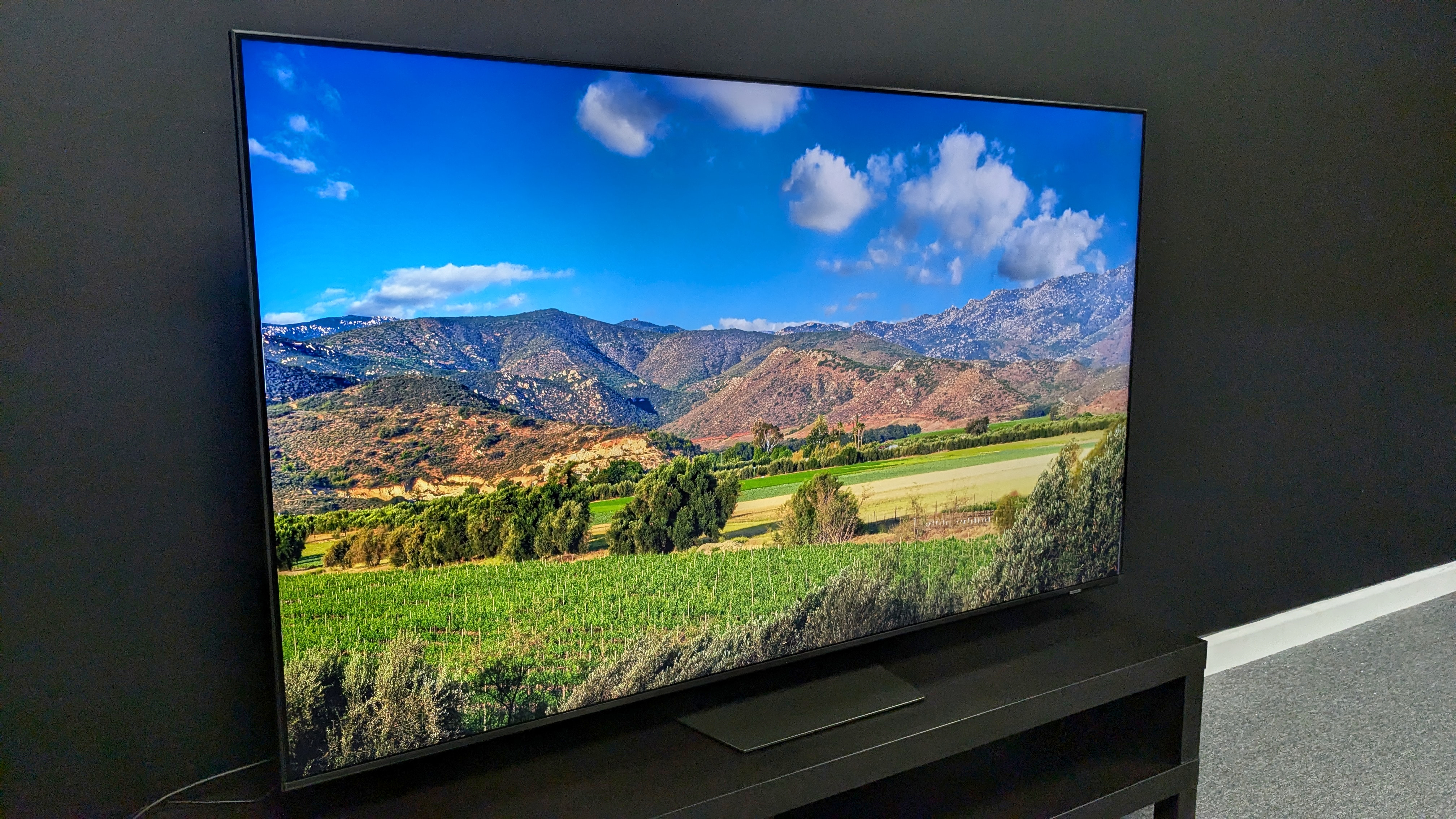
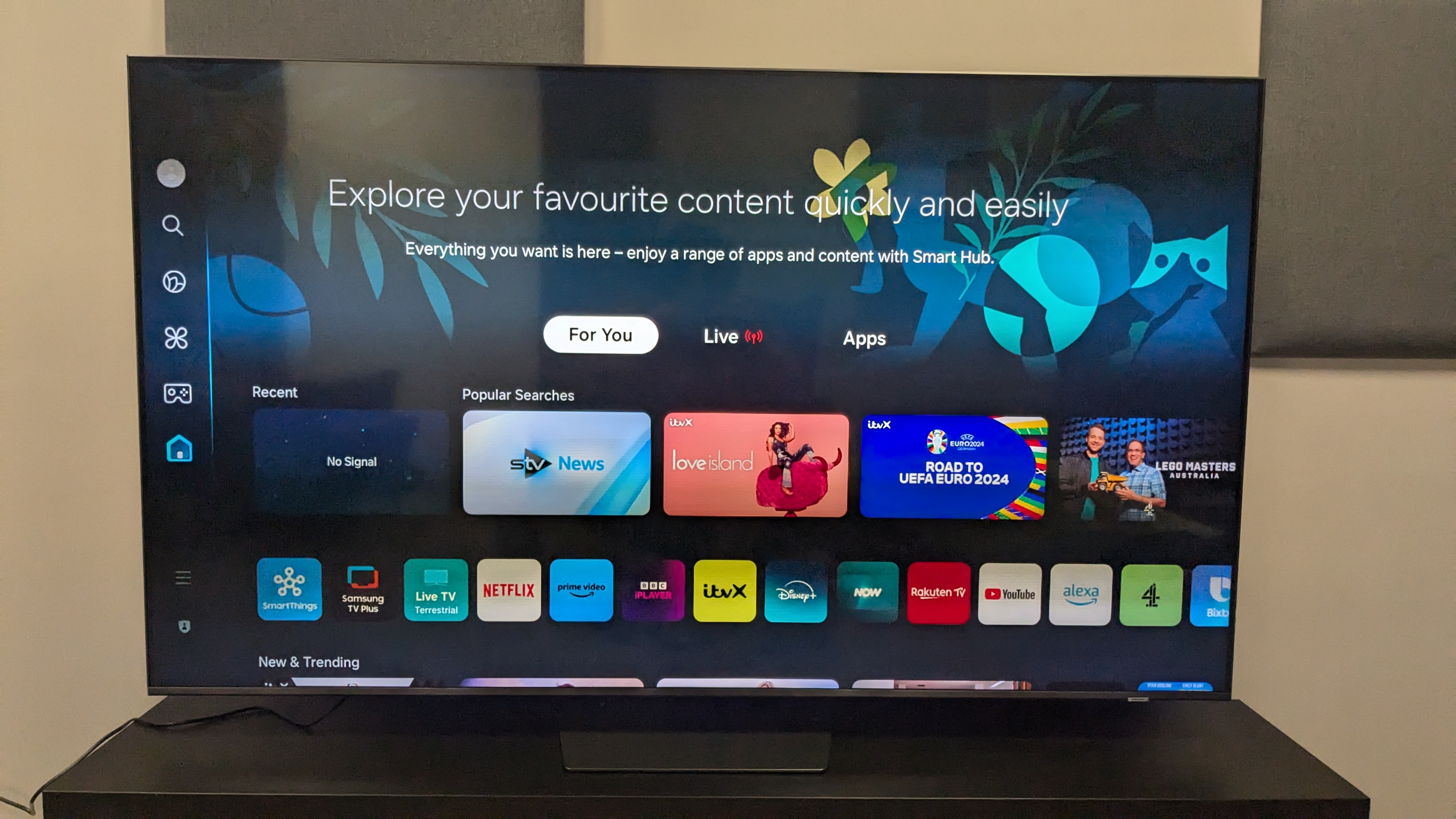
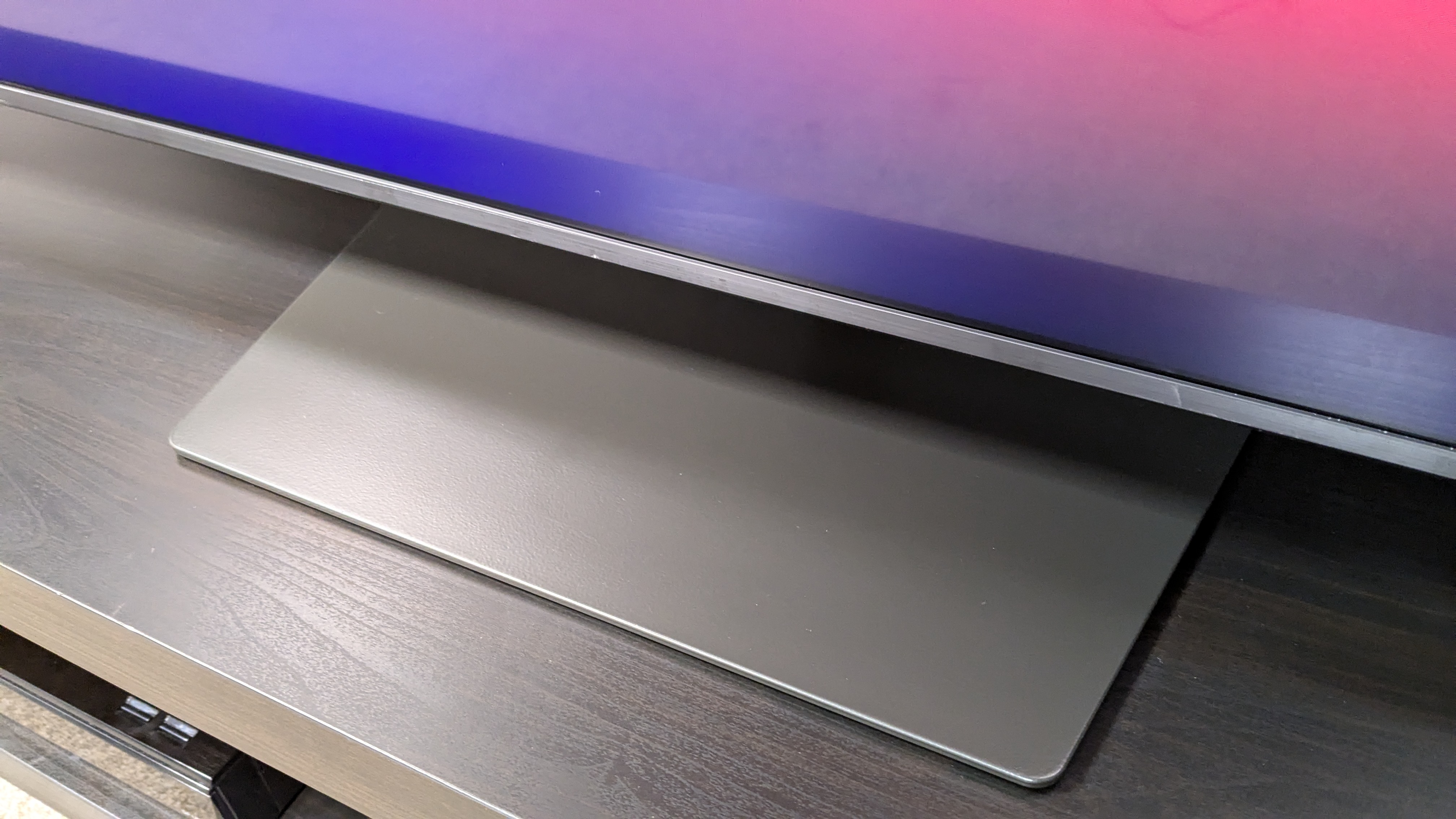
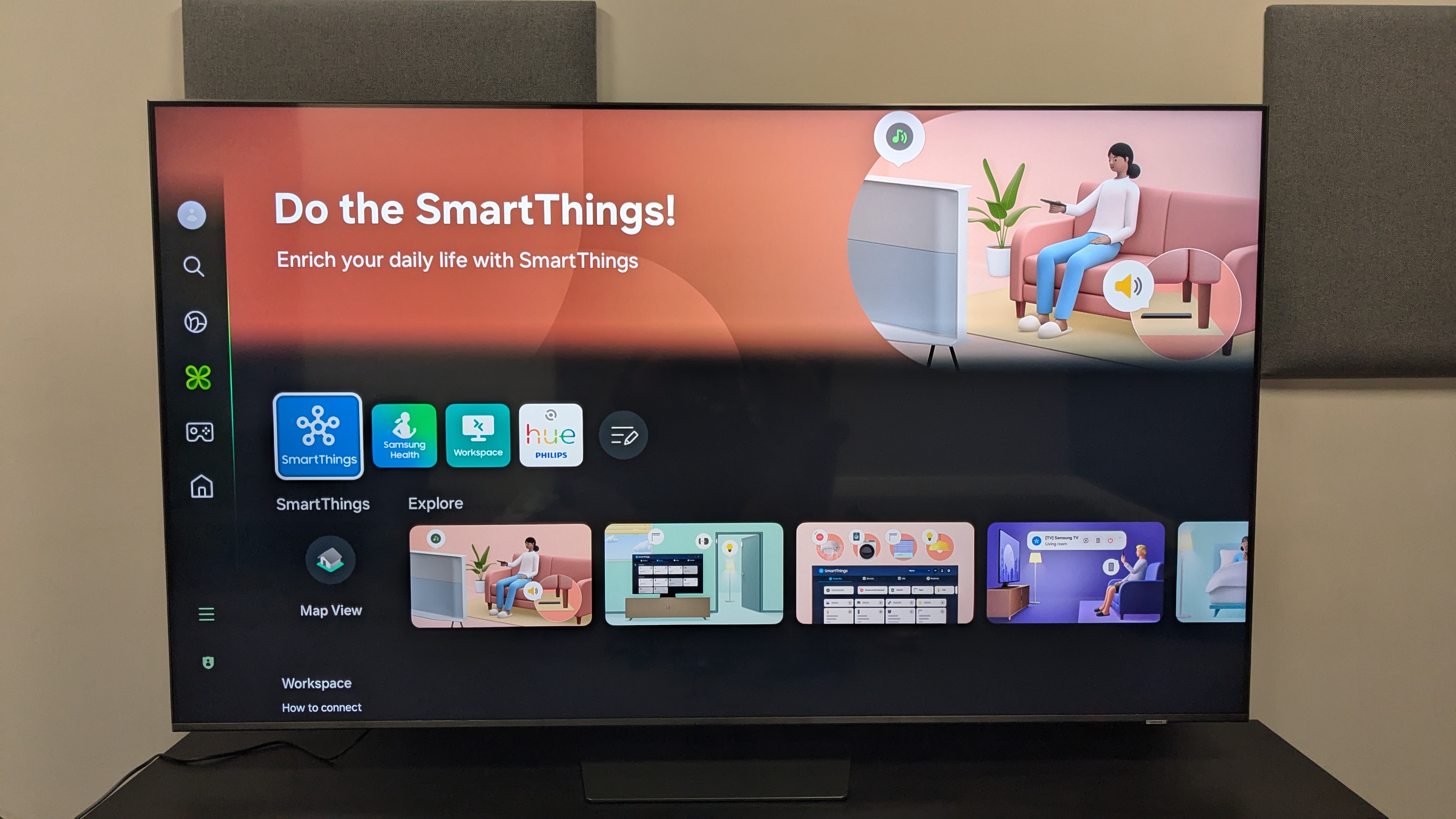
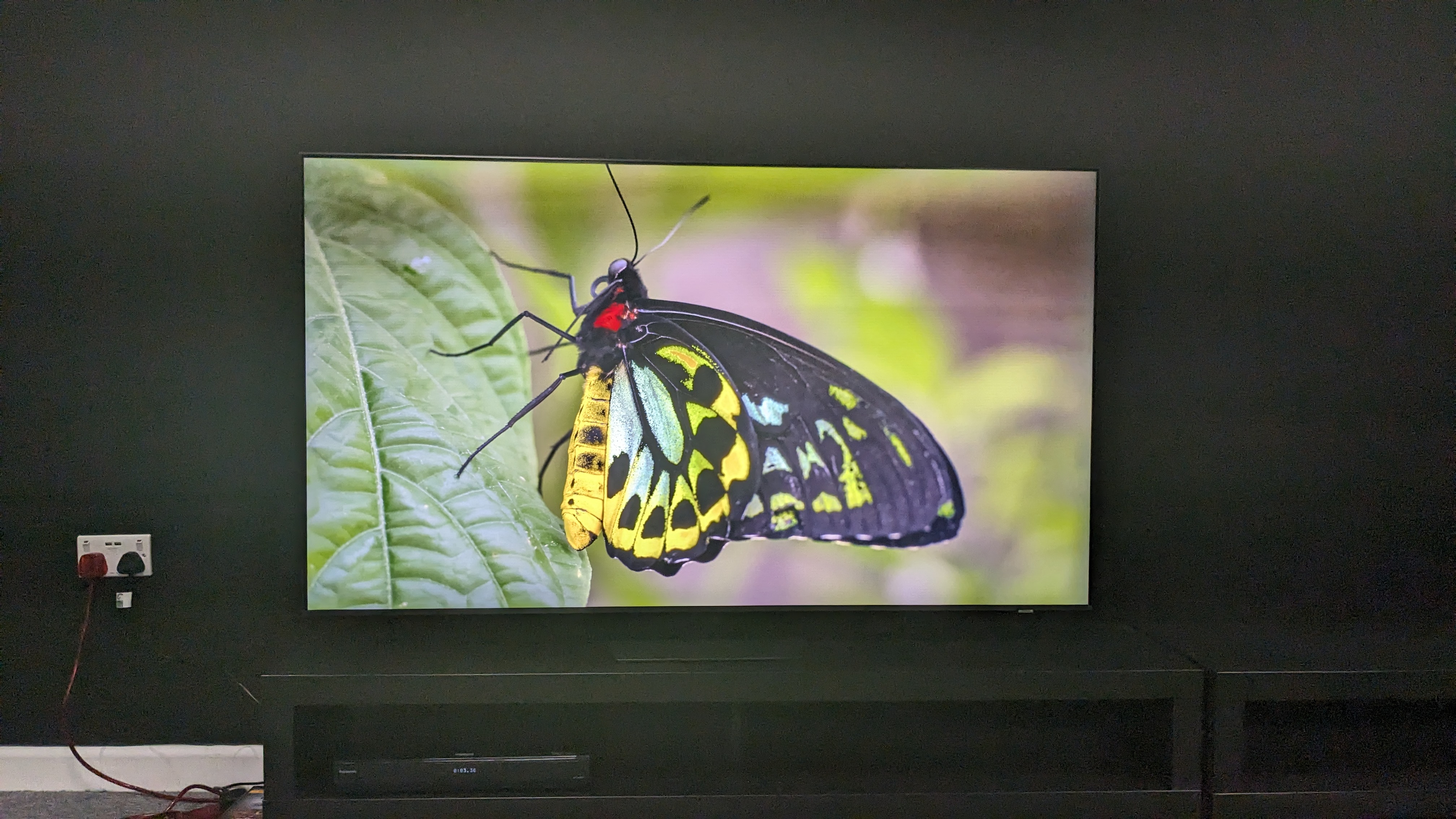
Specifications
Reasons to buy
Reasons to avoid
✅ You want a well-featured gaming TV: The Samsung QN85D carries four HDMI 2.1 ports that support 4K 120Hz and VRR and also has cloud gaming options.
✅ You want a good smart TV platform: While it may not be the best, Samsung's Tizen is an intuitive and well-featured smart TV platform.
❌ You want the best value 'budget' mini-LED TV: Budget mini-LED models from the likes of Hisense and TCL offer similar features and performance as the QN85D but are significantly cheaper.
❌You want good built-in sound: Bass levels on the QN85D are solid enough, but it lacks in every other area compared to other Samsung sets.
The Samsung QN85D faces a lot of budget competition from the likes of Hisense and TCL, both of which carry similar levels of performance and features as the QN85D. However, it beats them by offering HDMI 2.1 gaming features on all four ports, while still offering a good quality picture, plus Samsung's Tizen TV platform. It serves as the most affordable mini-LED in Samsung's 2024 range, too.
Picture quality on the QN85D is solid. Its natural textures and strong contrast levels are the main highlights, with a rich color as well, especially noticeable in HDR movies. Its black levels, while generally decent, did suffer from a gray hue on occasion that can happen with mini-LED sets. Motion was also generally well-handled, but required some tinkering to get right during our testing.
Like many Samsung TVs, the QN85D is a great option for gaming. It comes with the near-full suite of features gamers will hope for like 4K, 120Hz, VRR (AMD FreeSync Premium Pro as well) the Samsung Game Hub and ALLM. It also has an extremely good 10.1ms input lag time to make everything feel smooth and seamless even in the most intense games.
In terms of pure value for money, the Samsung QN85D is a little behind the Hisense U8N or the TCL QM851G – but in this guide, it splits the difference very well between Samsung's higher-end mini-LED or OLED TVs, and its more affordable models.
Read our full Samsung QN85D review
How to choose the best Samsung TV
With so many models to choose from, finding the best Samsung TV for you isn't always easy. But before you dive into the detailed specs of each model, here are a few key things we think you need to consider.
The first is budget. You might be able to bump up the price you can spend a little if you find the perfect TV – or find a great deal in the Black Friday sales – but it's a good idea to set a limit to begin with so you don't fall in love with the unrivalled images and features of a TV that's well above your budget.
Next up: size. It's tempting to always assume bigger is better when it comes to TVs. However, the size of the screen you should buy needs to be dictated by how far away you'll be sitting from it.
Many manufacturers, including Samsung, recommend sitting between 1.5 and 2.5 times the TV's diagonal screen size to find your perfect viewing spot. Get out the tape measure and ensure you have enough space to fit the TV and enough room between the TV and where you plan to sit.
In our best Samsung TV guide above, there are also a range of panel types – like LED and QLED – and HDR capabilities to consider.
Finally, if you're willing to buy a soundbar, you don't need to agonise about audio. However, if you'd like an all-in-one cinema system, consider a TV that delivers great audio as well as a fantastic picture, like the Samsung QN900B Neo QLED 8K.
And do you even need a Samsung TV? There's a lot to love about Samsung's TVs, but it may also be worth your time to take a look at our best LG TV and best Sony TV guides as well.
Are Samsung TVs any good?
Considering you've made it this far, we're guessing you had Samsung in mind. But why else would you look for the best Samsung TV?
You'll find multiple Samsung TVs across our guides. The flagship models are generally class-leading in terms of technology, while the more affordable options don't cut the wrong corners; they deliver excellent value for money. Samsung's Tizen OS is one of the best smart TV platforms too, although some of us feel that the most recent changes to its user interface were a step backwards rather than forwards. But it's still an excellent OS.
The one big downside that applies to all current Samsung TVs is that they don't support Dolby Vision, an HDR format that delivers higher brightness and better colors than HDR10. Samsung TVs support all the other key ones, but it does mean you won't benefit from Dolby Vision content on devices such as the Xbox Series X.
That's a minor niggle, though. The sheer size of Samsung's TV range – and its constant launching of even better models – means that the firm offers multiple high quality models in ever major market sector and at every price point too. If you're looking for good quality without breaking the bank, Samsung TVs definitely get our seal of approval.
Is QLED better than OLED?
With both QLED and OLED vying for your attention, it can be tricky to know what's best for your situation. We've broken down the differences in our OLED and QLED guide. But it's also fairly easy to summarise. QLED use LED backlights to illuminate the screen and OLED's pixels illuminate individually. That means OLED typically offers much better black and grey reproduction than QLED, but QLED is significantly brighter.
Until fairly recently Samsung was sticking firmly with LED technology rather than OLED, so while firms such as LG were building their brands on high performance OLED displays Samsung concentrated instead on its brighter, more responsive and more affordable Quantum Dot LEDs, or QD-LED for short. Samsung has also brought some very impressive mini-LED TVs to market, and its latest flagships are QD-OLED. That means they have the incredible contrast of OLED TVs but the brightness of QD-LED, which for many buyers means they offer the best of both worlds.
If you're buying on a budget, QLED definitely gives you more brightness for your buck than the equivalent OLED – but if you're a fan of old movies and want to see them as the director and cinematographer intended, OLED is a better bet. And if you can't decide? We're pretty impressed by Samsung's mini-LED, and we'll like QD-OLED even more when the prices come down.
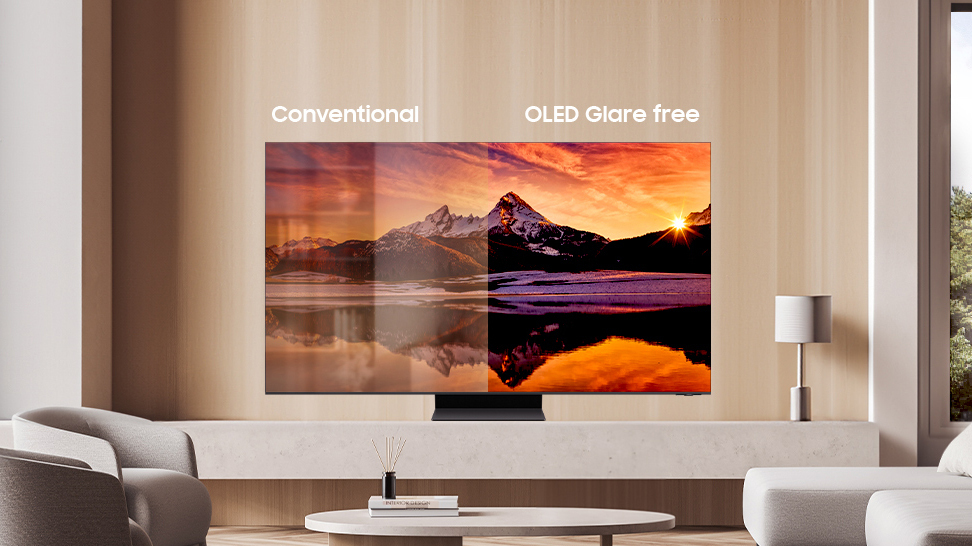
How do Samsung TVs compare to other manufacturers?
Samsung QLED, mini-LED and QD-OLED TVs are known to be some of the brightest, most color-saturated televisions on the planet. With Tizen built-in, they're well-stocked with the latest apps, and most of the mid-range and high-end models have high levels of quality control. However, budget models make some concessions and generally don't look as good as models from TCL or Hisense, but are in line with LG's cheaper TVs.
We feel Sony does a better job overall with motion handling and LG seems to understand how to do upscaling the best of the big three, but Samsung remains competent in all major areas with no real weak spots.
New Samsung TVs to watch for in 2025
At the CES 2025 trade show, Samsung announced two new series of OLED TVs. The S95F is a flagship model that features next-gen Glare Free screen tech, 4K 165Hz PC gaming support, and Samsung’s Art Store – a feature previously limited to the company’s The Frame TVs. Another change for Samsung’s OLED flagship is a new 83-inch screen size. A new mid-range S90F series OLED will also be available in 42-83-inch screen sizes. Samsung says the S90F will be brighter than last year’s S90D series models and it will also have 4K 144Hz support for gaming.
Along with the new OLEDs, Samsung also announced a new range of 8K and 4K mini-LED TVs at CES. The two 8K series are the QN990F and QN900F, with the flagship QN990F also featuring a Glare Free screen plus a new 8K wireless One Connect Box with support for 8K 120Hz at up to 10 meters. Samsung’s flagship 4K mini-LED for 2025 is the QN90F. That model will also feature a Glare Free screen plus 165Hz gaming support, and it will be followed by the mid-range QN80F and entry-level QN70F series. All new mini-LED TVs will have Samsung Art Store support.
How we test the best Samsung TVs
When it comes to how we test the best Samsung TVs, we'll put it through all the same tests we do for any other brand, looking at specific criteria such as picture quality, gaming performance, built-in audio and more.
For starters, we put all of the sets in this list to the test with standard definition, 1080p, 4K and even 8K content resolutions (if applicable) to see how they perform. During this, we'll choose the most accurate picture preset and begin our subjective tests using reference scenes we're familiar with so we know a TVs strengths and weaknesses.
For picture, we're looking for bold, dynamic color that isn't too oversaturated, rich black levels that are accurate and good contrast that's well-balanced when it comes to light and dark sections of the screen. We'll also test motion - how does the TV handle motion naturally? Is it smooth? Does it need motion processing such as blur and judder reduction?
Using the variety of sources listed above, we'll also test a TV's upscaling abilities on lower-resolution sources to see if it can create a clearer image of SDR movies and TV shows. This is especially important on larger screens as it has to work harder to reproduce the low-res image across a larger surface.
We'll also test gaming and see if it has the features we're looking for such as 120Hz, VRR, ALLM and a gaming mode to tailor the gaming experience to its most optimum. These features aren't strictly necessary, but the more gaming features it has, the better. We'll also test overall gaming performance and graphics.
After testing audio quality, checking out design and so on, we'll move onto our objective tests. This is where we use specialized equipment - a test pattern generator, colorimeter, the Leo Bodnar 4K HDMI input lag tester and Portrait Displays' Calman calibration software - to measure brightness, accuracy, color gamut and input lag on each TV.
To test for brightness, we use the colorimeter to measure the TVs brightness across different sized white window patterns generated by the test pattern generator including sizes such as 2%, 10% and 100%. A 10% window will give us the most realistic idea of peak brightness and how effectively the TV will display HDR highlight, whereas 100% (full screen) will tell us how a TV handles reflections and sustained bright images across the whole screen. We then use Calman to record the results.
Color accuracy and color gamut coverage, in both SDR and HDR, tell us how accurately a TV displays a source's colors on screen and how much of the color gamut it can cover. We also test grayscale, to see how effective a TV is with darker, grayer tones.
While we always aim for consistency across our testing, some of our reviewers do have different setups and environments. However, we will always use the same level of equipment and follow the same testing criteria and guidelines.
Latest updates to the best Samsung TVs
March 17, 2025
Added photo galleries for each TV entry in the guide.
January 17, 2025
Added section 'New Samsung TVS for 2025' with details on new models announced at the CES trade show.
November 20, 2024
Swapped the Samsung CU8000 with the Samsung Q60D as 'best budget' due to stock and Q60D's better picture and performance. Added in Buy if if boxes with reasons to buy and avoid for each entry.
September 20, 2024
Swapped the Samsung QN90C for the Samsung QN90D, a 2024 model with improved brightness and picture processing.
July 23, 2024
Swapped the Q80C for the Q80D in 'best-mid range'. Swapped the QN900C for the QN900D and changed category from 'best mini-LED' to 'best 8K'. Introduced QN800D as 'best cheaper 8K'. Swapped the QN85C for the QN85D as 'best affordable mini-LED'.
March 14, 2024
Changed best budget from Samsung BU8500 to Samsung CU8000 due to stock. Expanded how we test section for more detail on testing process.
December 18, 2023
Updated guide format to have new quick menu and lead image, as well as added in the Samsung Q80C as best mid-range.
Get daily insight, inspiration and deals in your inbox
Sign up for breaking news, reviews, opinion, top tech deals, and more.

James is the TV Hardware Staff Writer at TechRadar. Before joining the team, he worked at a major UK based AV retailer selling TV and audio equipment, where he was either telling customers the difference between OLED and QLED or being wowed by watching a PS5 run on the LG 65G2. When not writing about the latest TV tech, James can be found gaming, reading, watching rugby or coming up with another idea for a novel.
- Al GriffinSenior Editor Home Entertainment, US